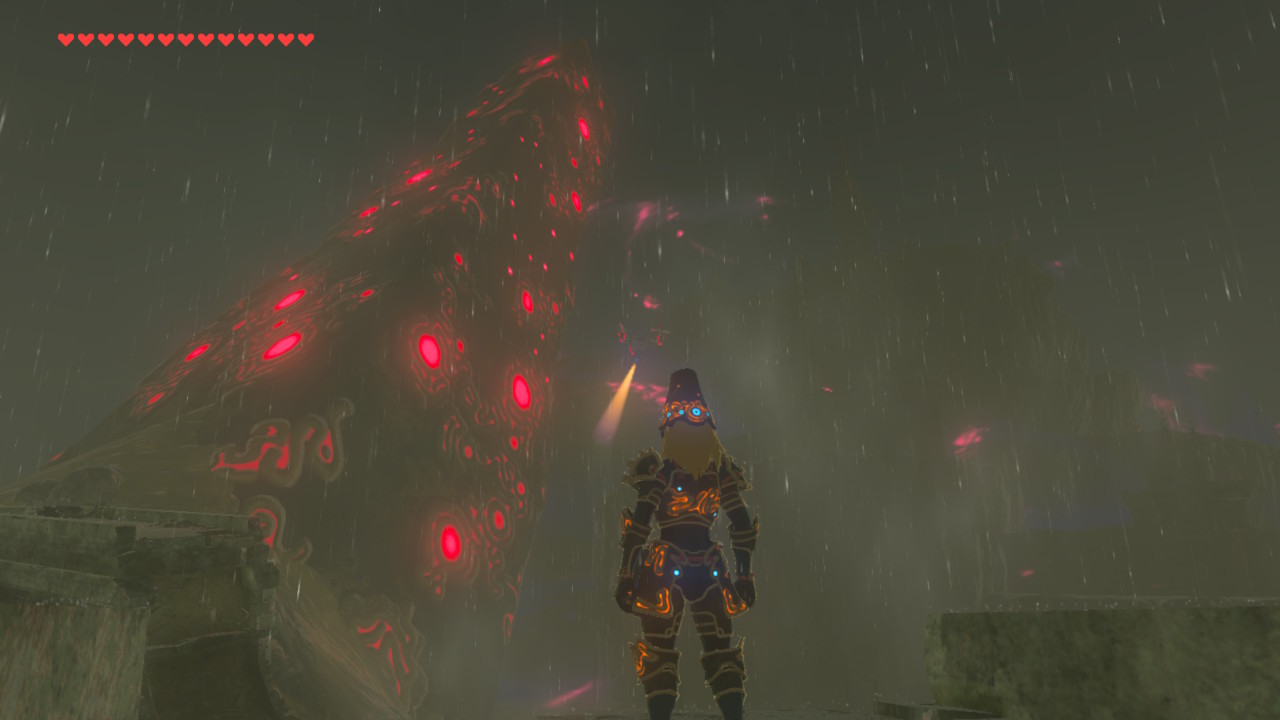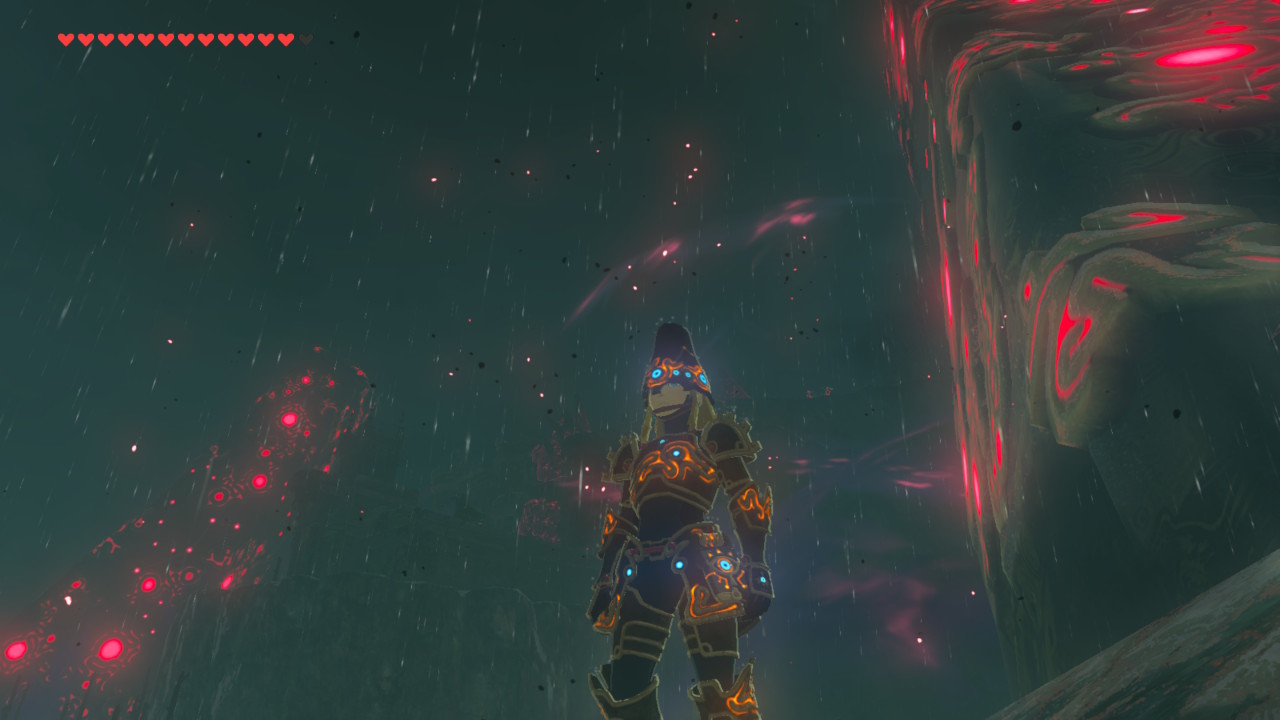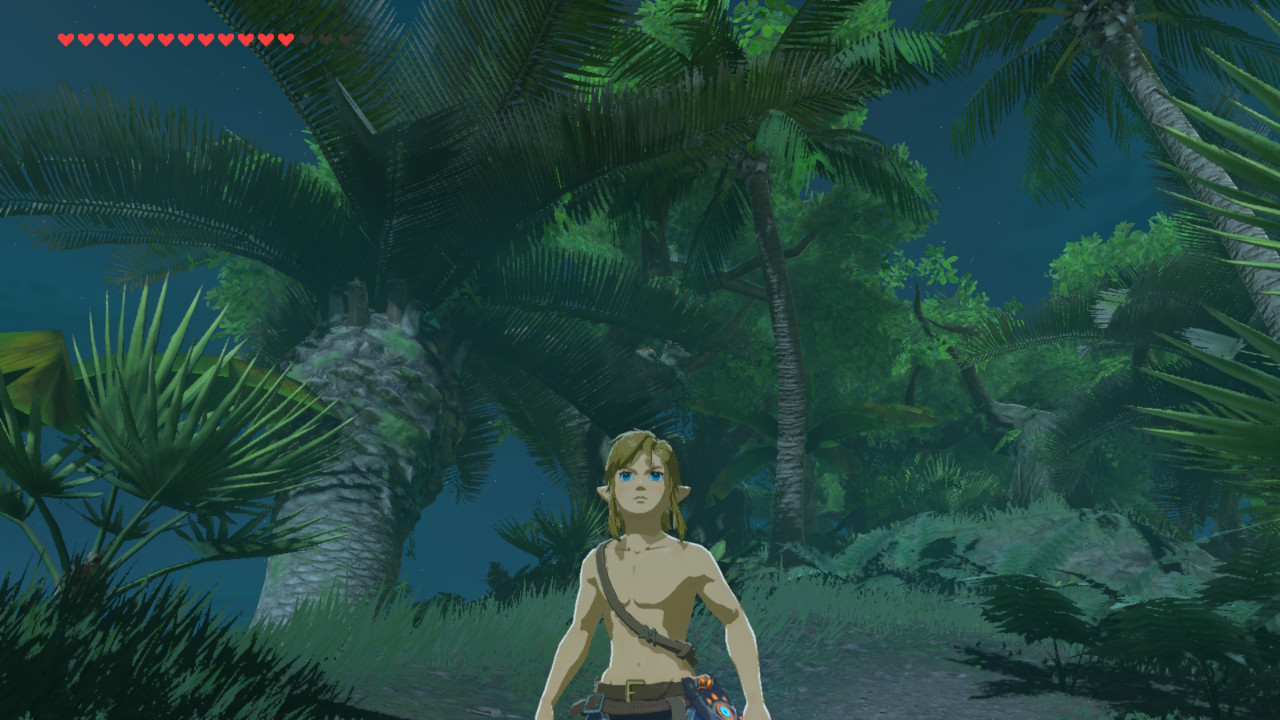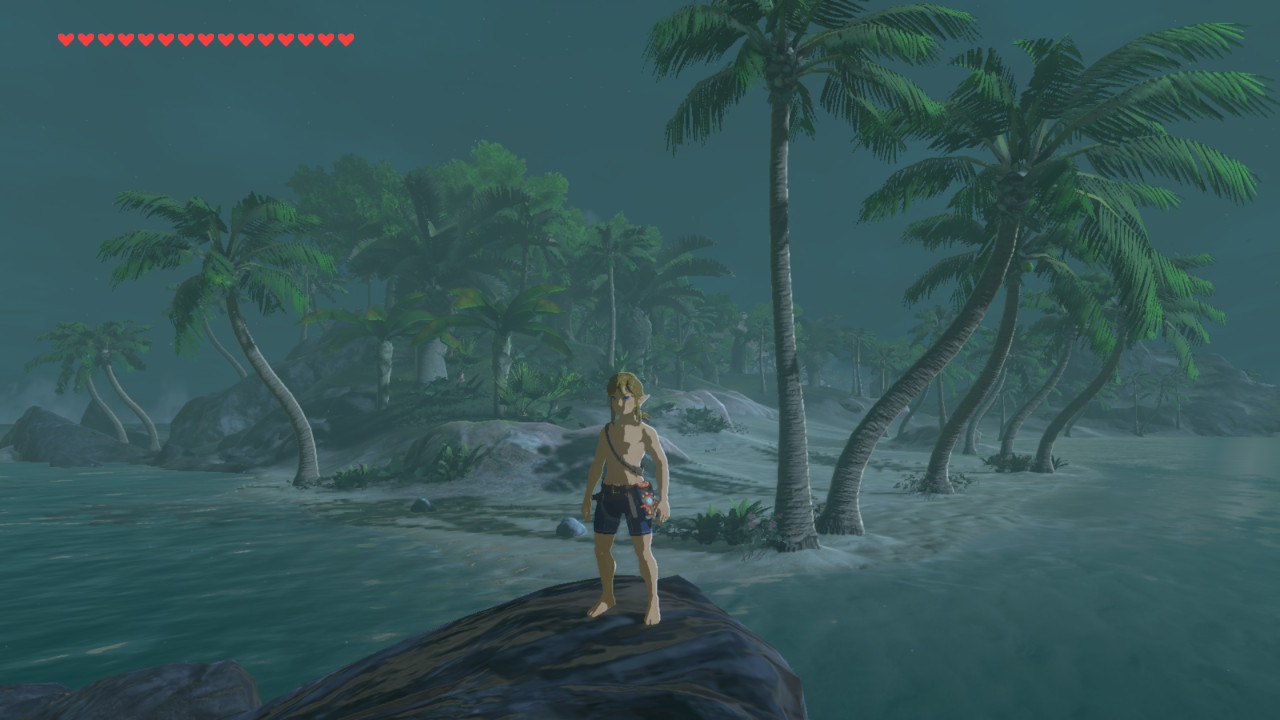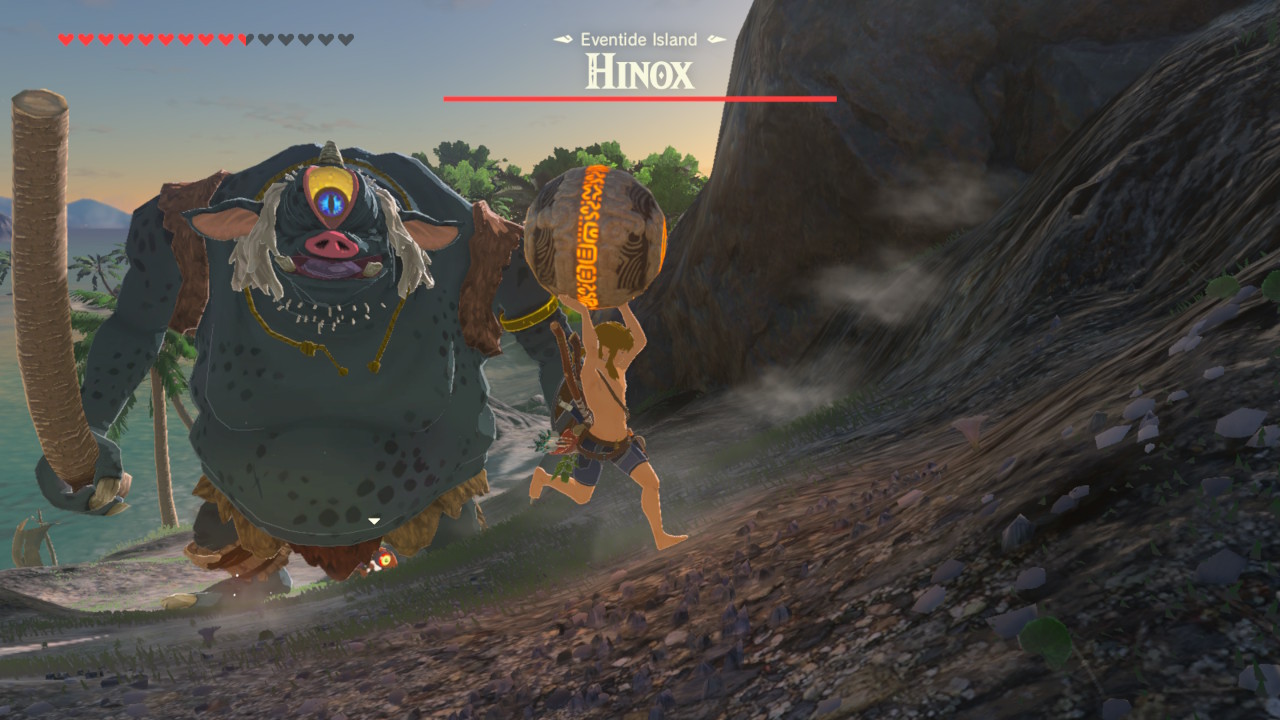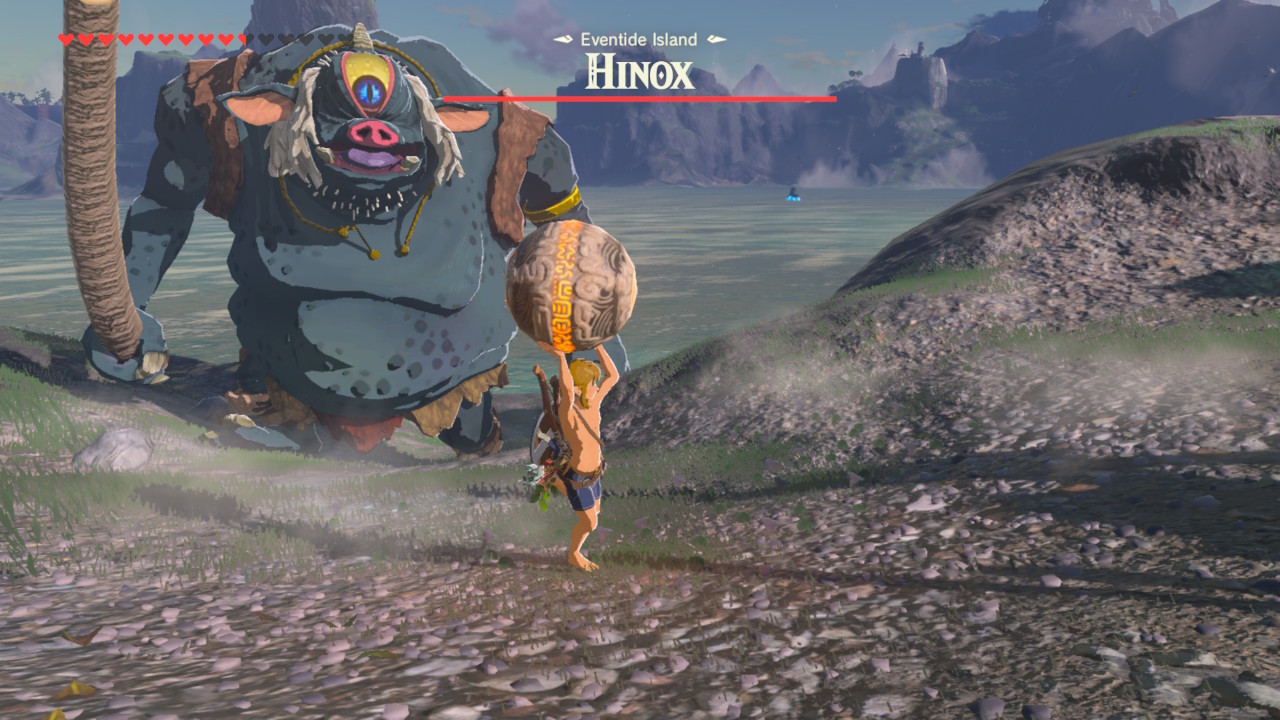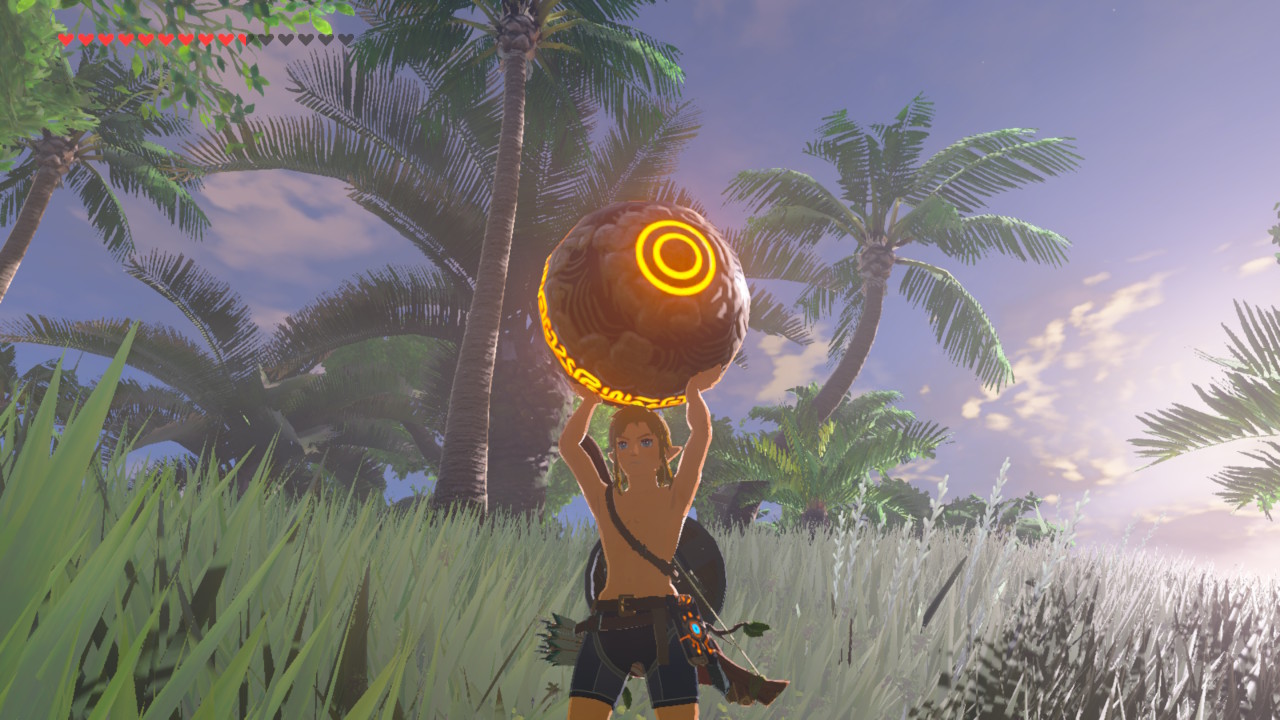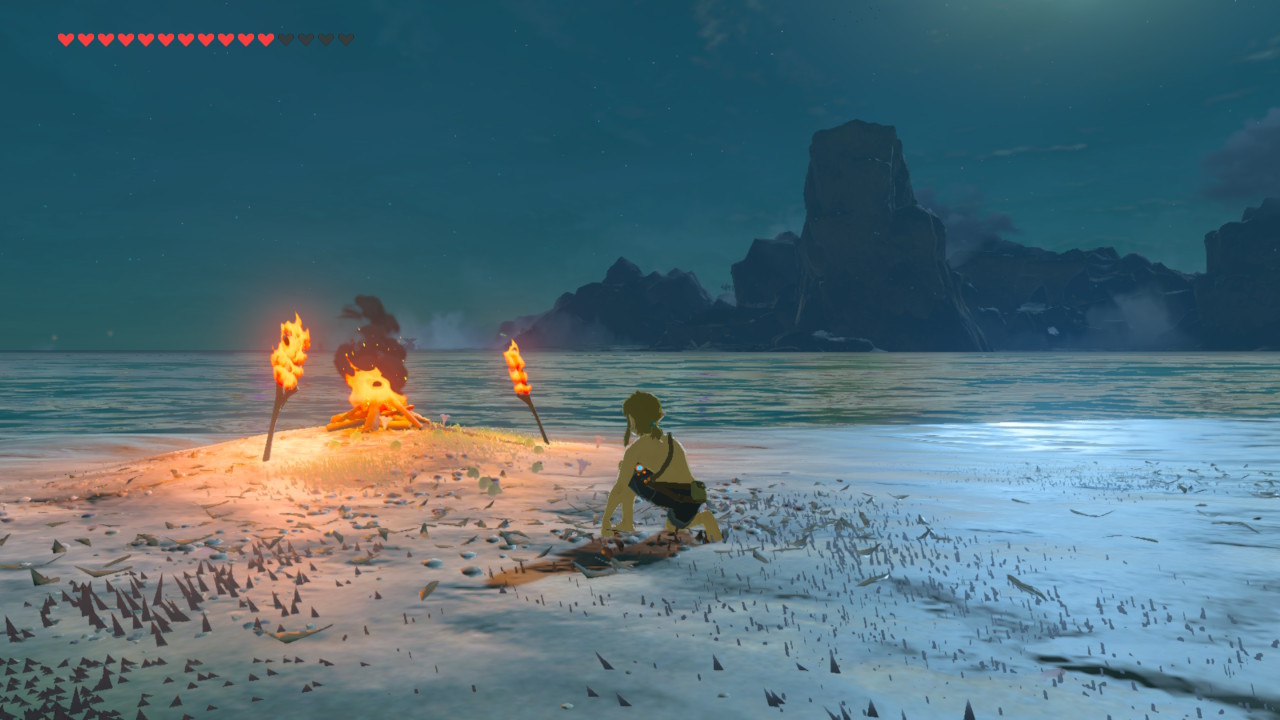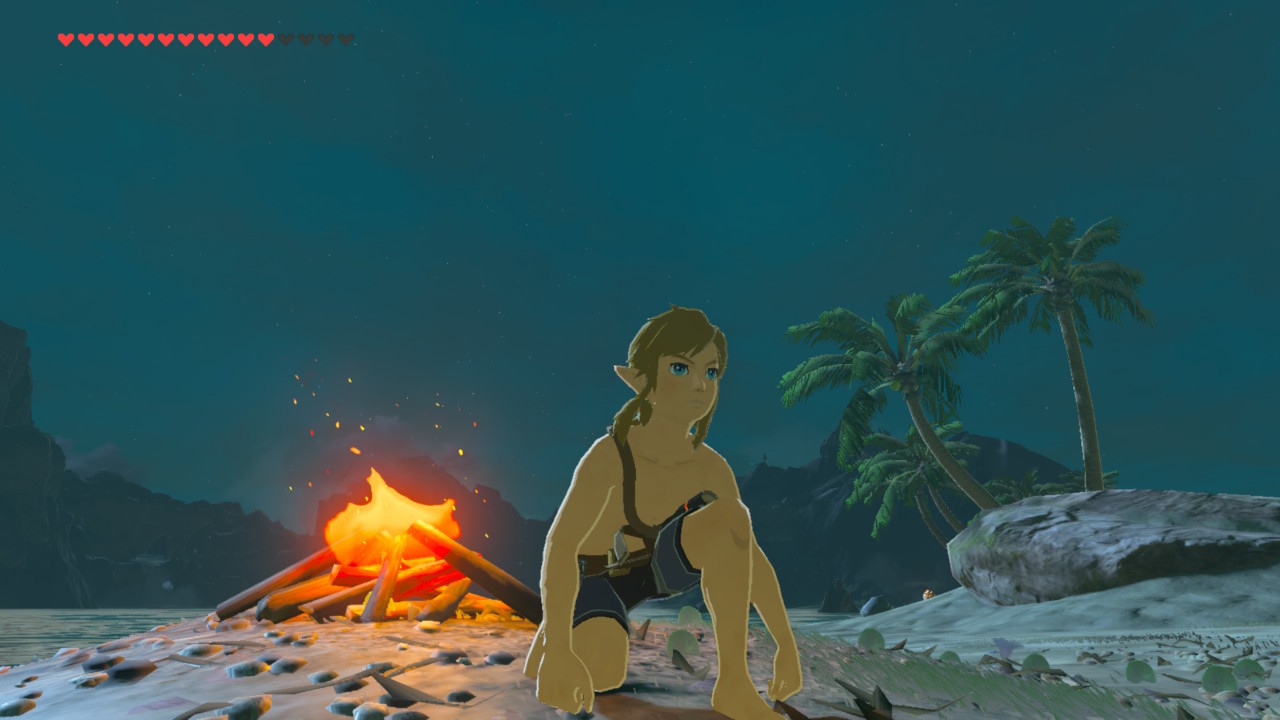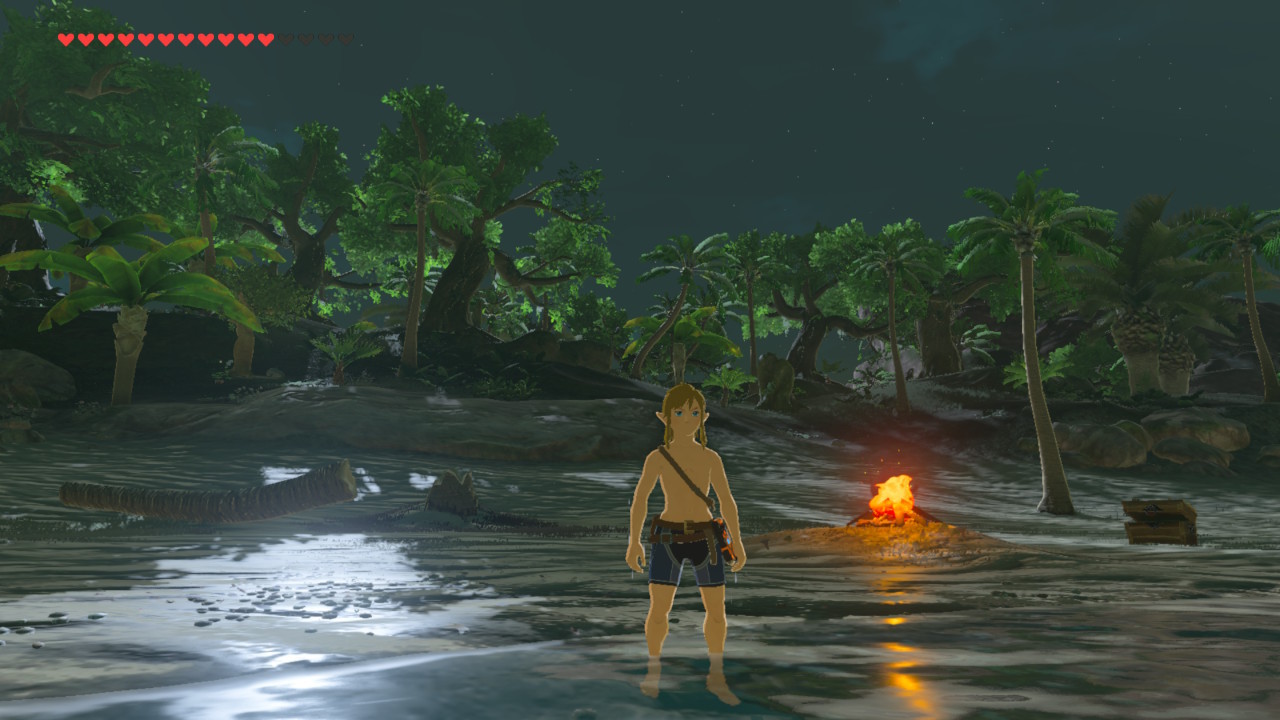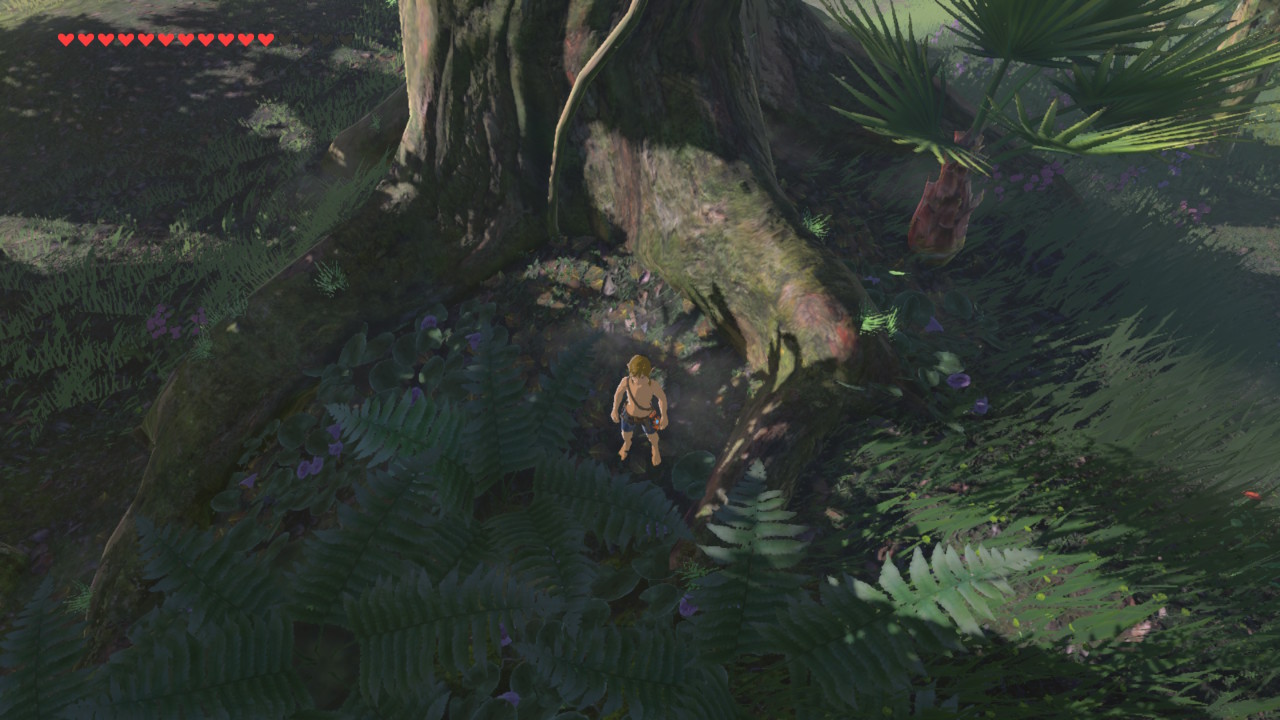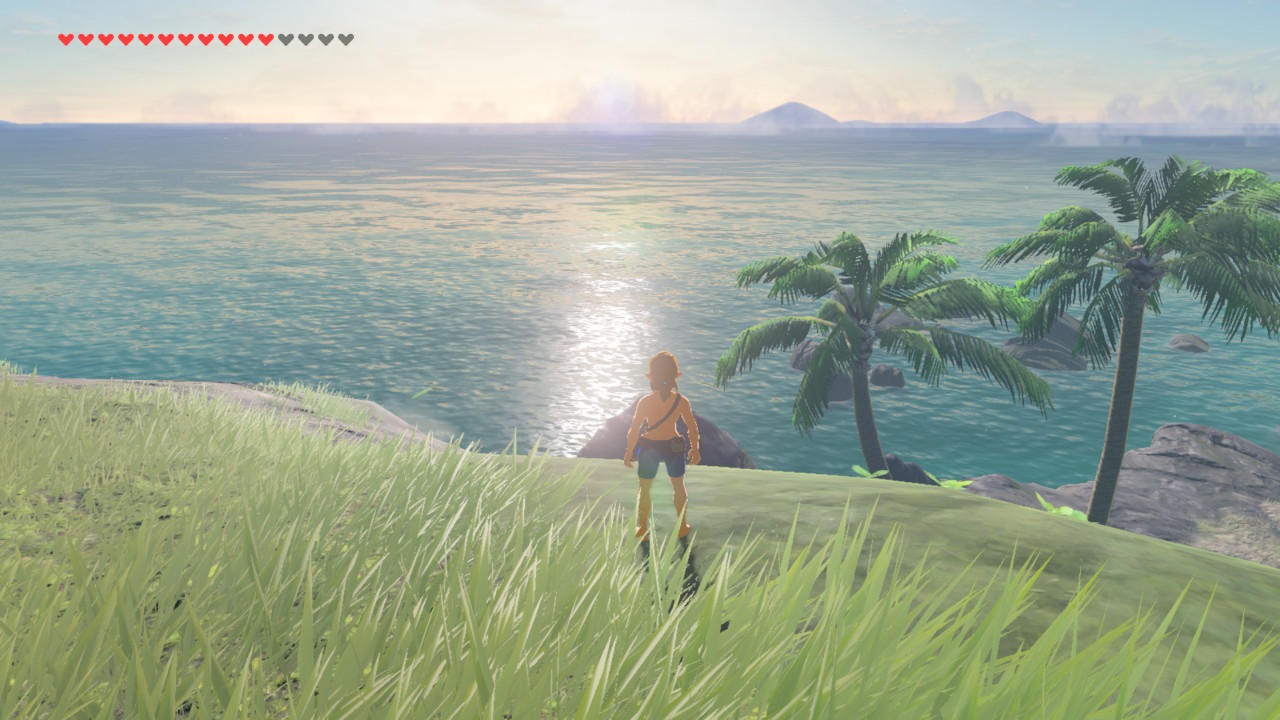NOTE: This is a thread I started in the Old Country that I'd like to bring over here. I'd like to get everyone's thoughts on the diversity in Breath of the Wild — depictions of different ages, genders, body types, races, cultures, regions — as well as its art direction in general.
My main focus starting off is the Gerudo women, including their culture and region.
The following is the original thread from April 2017, with light edits:
#########
I love pretty much everything about BotW — the most fun I've had in a videogame since MGSV, and the first game to dethrone RE4 as my all-time favorite. But I'm trying to keep this focused!
I've put in 275 hours and taken 4,000+ screenshots. I adore this rendition of Hyrule and its people — from the Rito now resembling actual birds (osprey! macaws!), to the adorable kids in every village that scamper around going "Hoo! Hah! Hoo! Hah!" (Whenever rain-slick surfaces or broken weapons have you down, just remember you're doing it for the kids!)
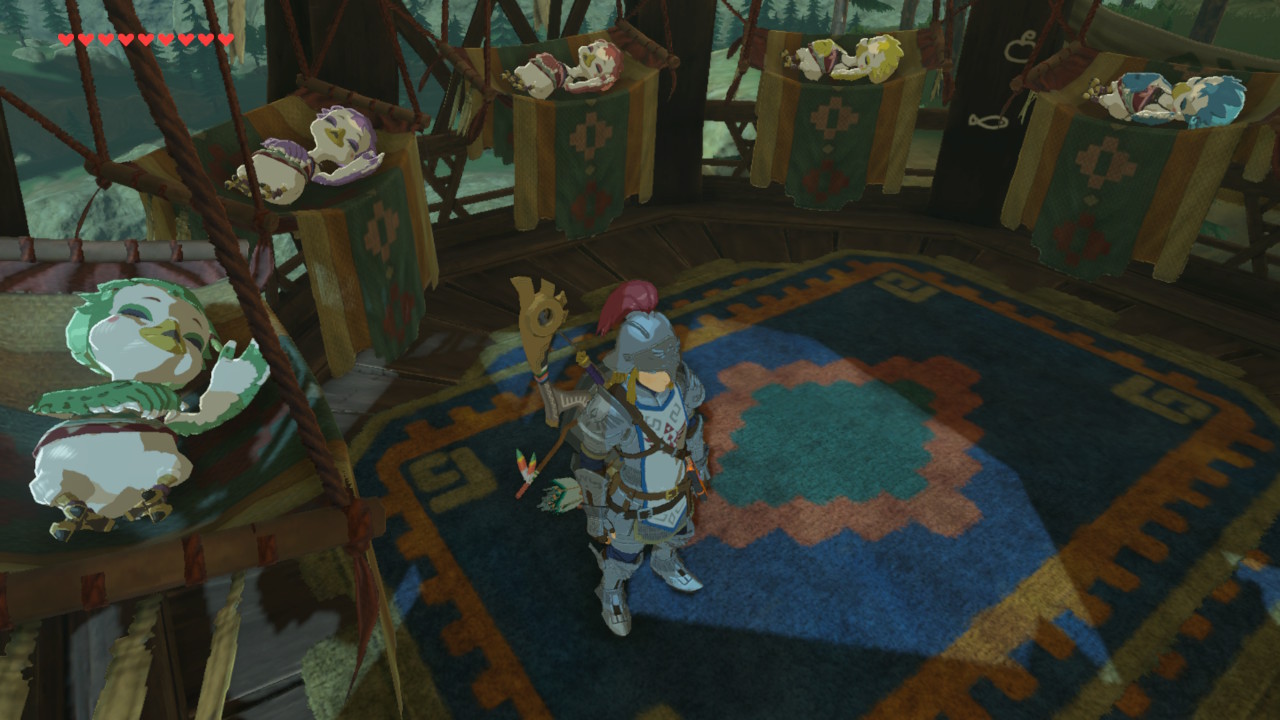

But of all the wonderful people and places in Hyrule, I think the Gerudo stand out the most… and not only because they stand over 8 feet tall! It's also their diversity and their culture — by far the most developed in the game — and the well-designed region they inhabit.
Deserts don't usually do much to capture my imagination. I find them to be a bit, well, dry! So I really dragged my feet traveling southwest. The idea of a barren wasteland just didn't seem appealing next to the prospect of dew-dappled grasses swaying in a mountain breeze, or autumnal landscapes in the shadow of an active volcano, or lush tropical jungles leading down to the beach. I'm also a sucker for the constant rain (yes, slippery slopes and all!), and I knew there wouldn't be any in the desert.
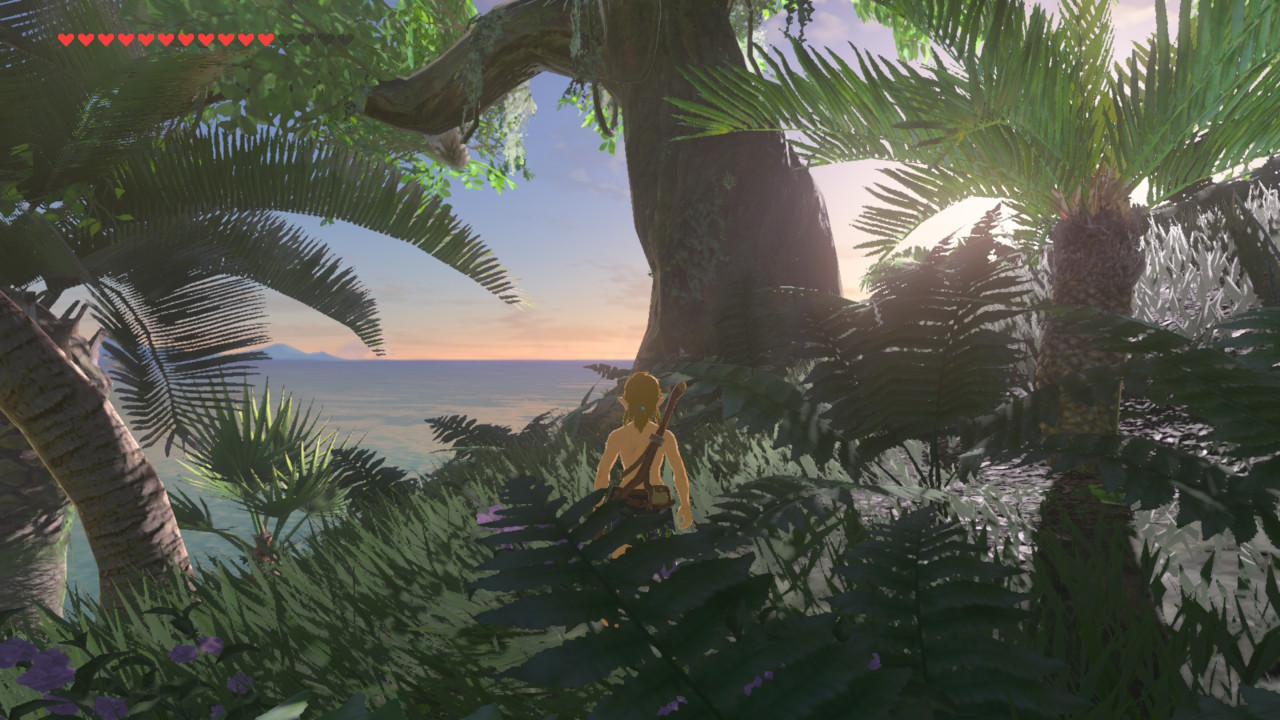

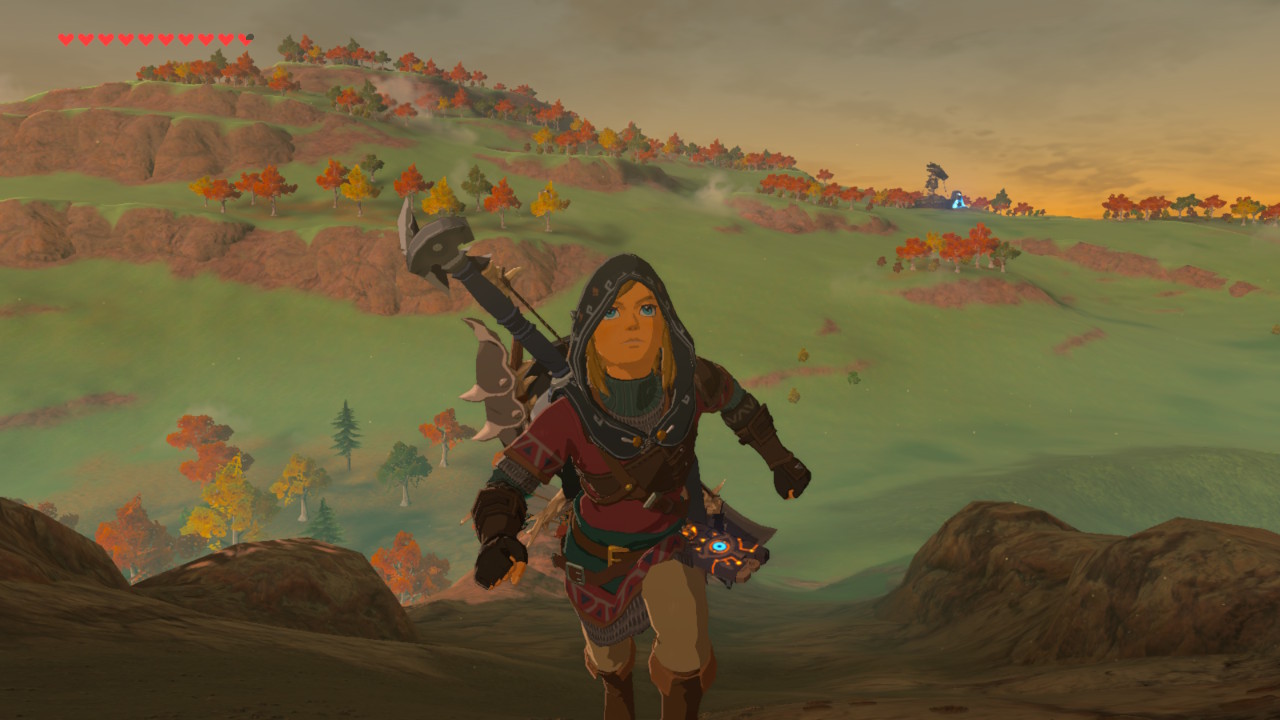

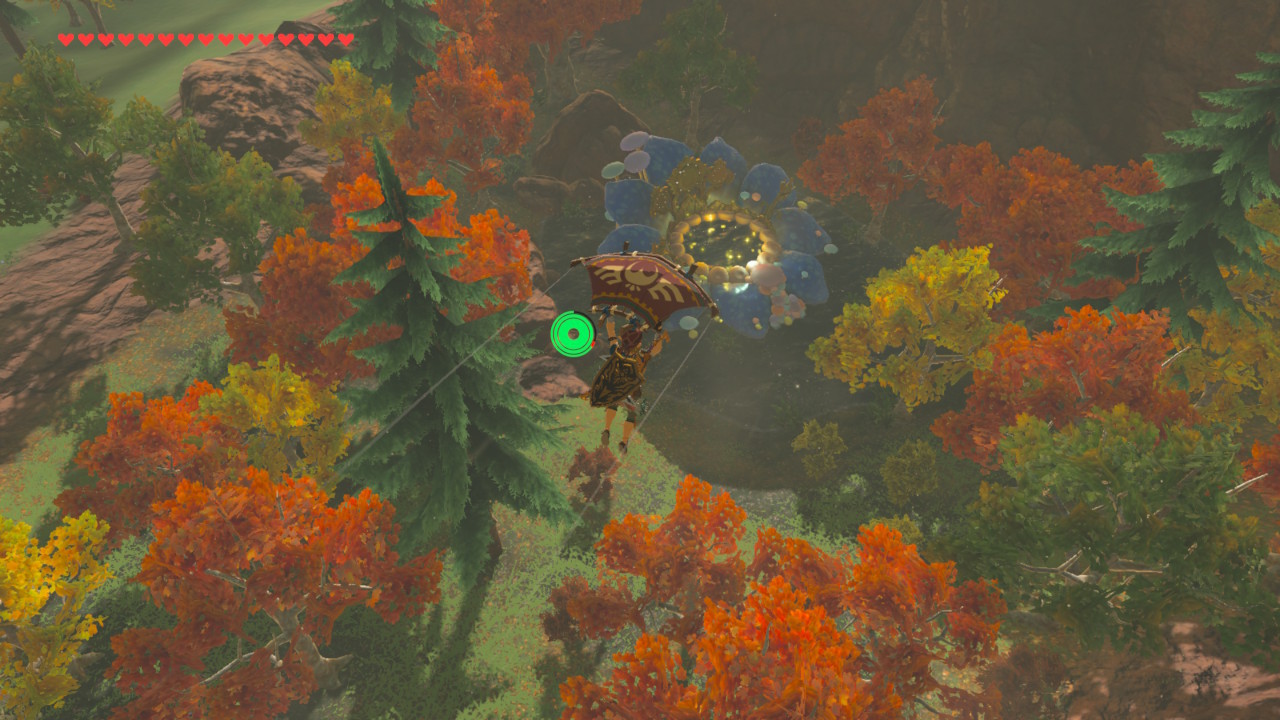
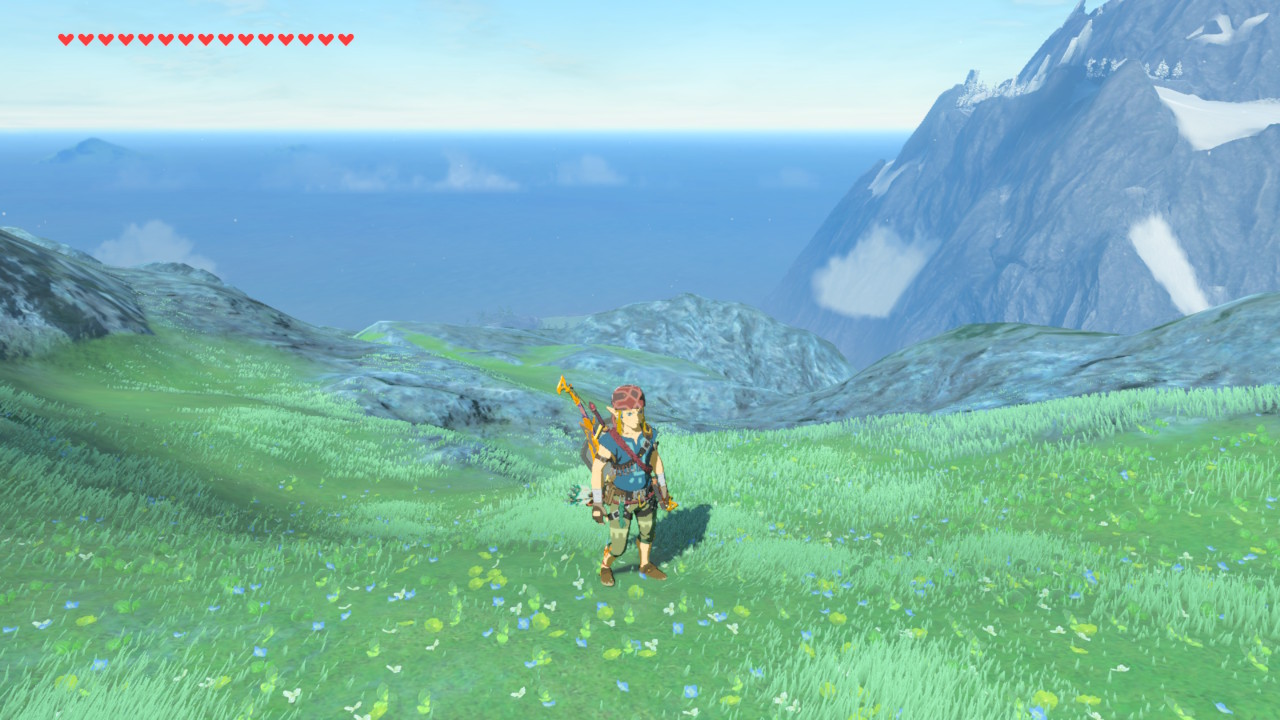
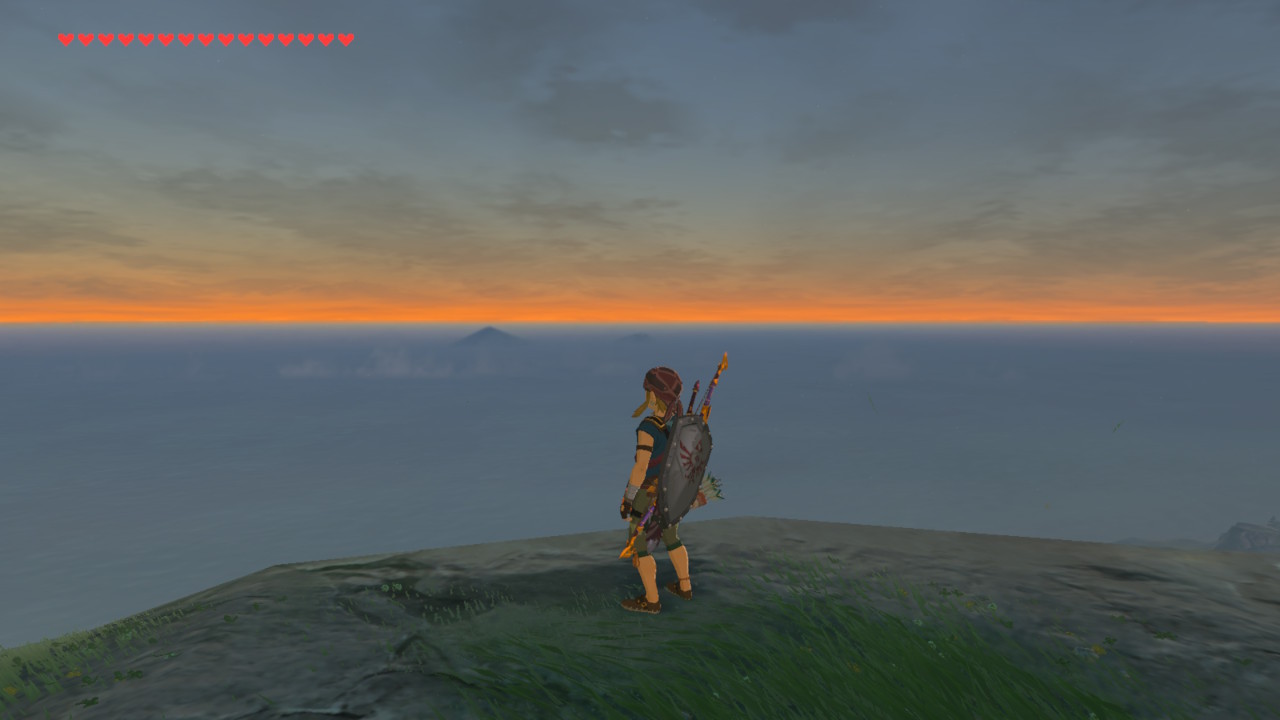

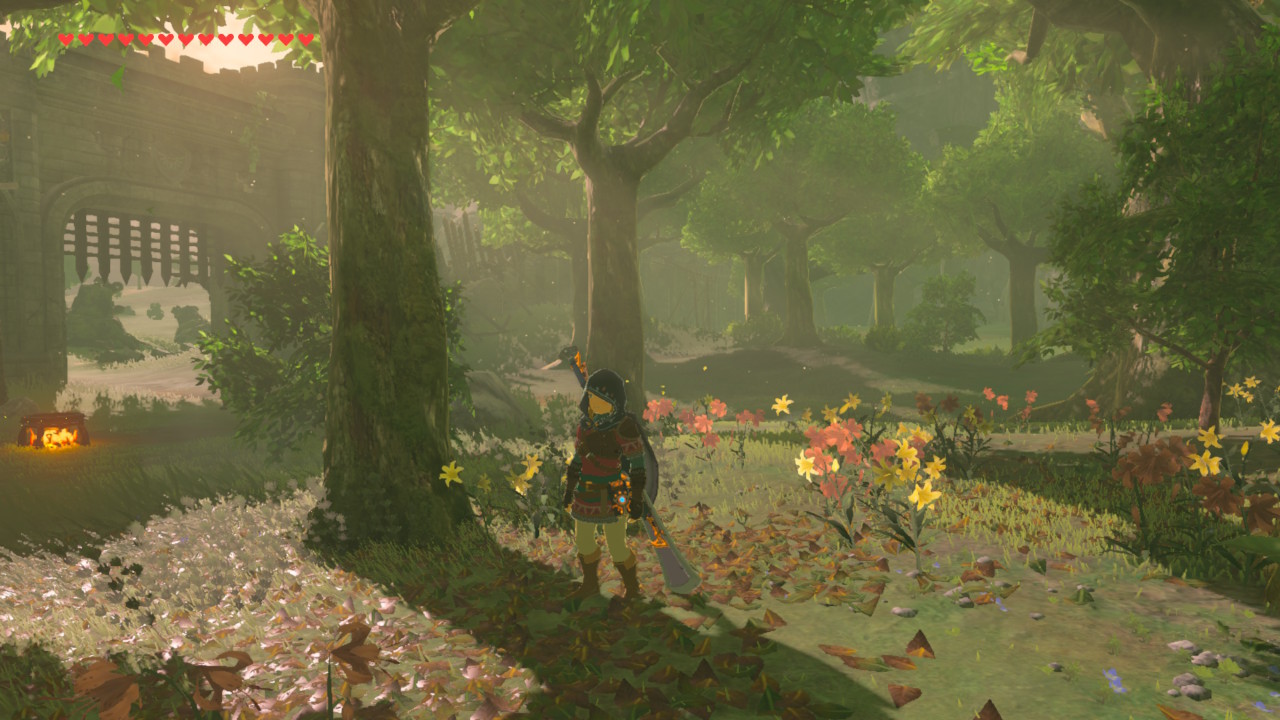


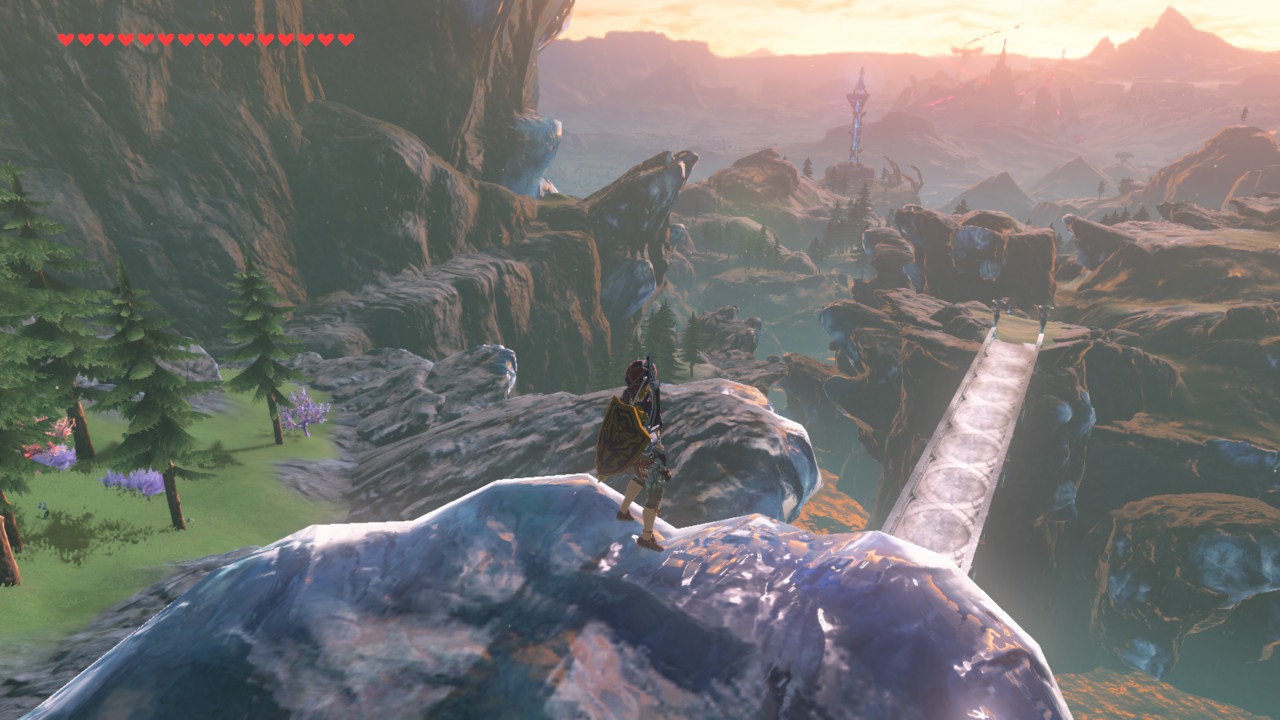
It almost felt like a whole new game when I got there, gliding unaware over the Gerudo Canyon stable, which I didn't discover for another 50+ hours!
The desert region is walled off from the rest of Hyrule by way of the Gerudo Highlands that block your view of Hyrule Castle and Death Mountain — two landmarks that serve as reference points for just about every other region. As such, the desert feels like its own little world. And immediately I was taken with its deeply immersive weather system.
During the day, certain areas are scorching hot, requiring you to stay in the shade of stone structures or moving clouds, equip heat-resistant clothing or ice-infused weaponry, or to consume meals and elixirs with a cool-down effect. But soon enough, the sun sets, and temperatures plunge, requiring you to warm up instead. Chalk it up to the strong art direction and convincing wind effects, but when Link feels hot or cold, so do I — and the ability to engage this as a gameplay mechanic immediately made the desert more compelling than in games prior.
Here are some random scenes from around the Gerudo region (both highlands and desert):
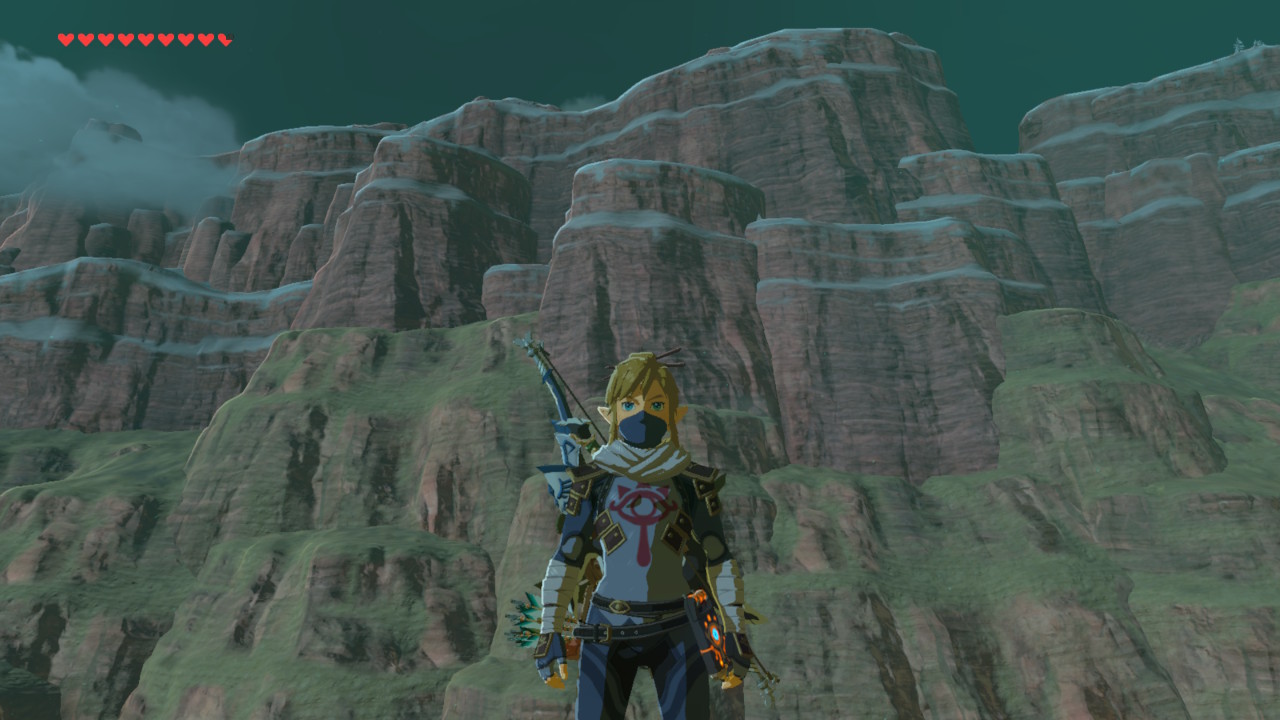
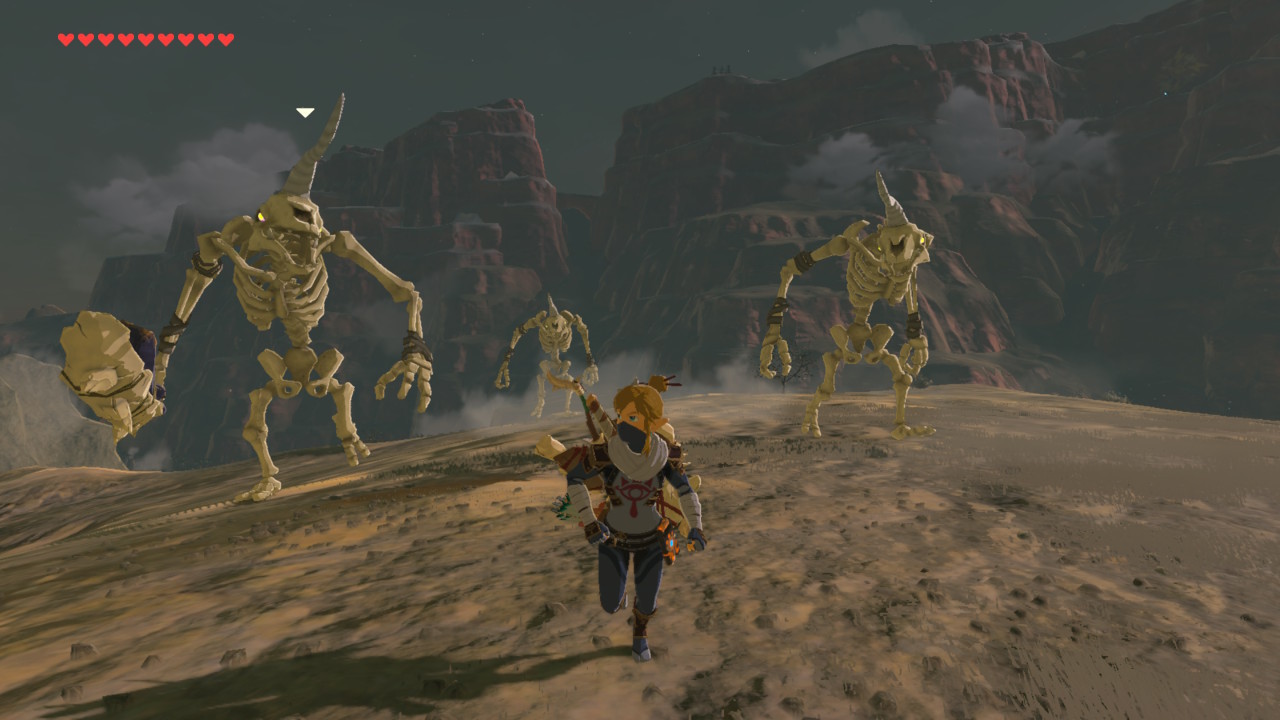

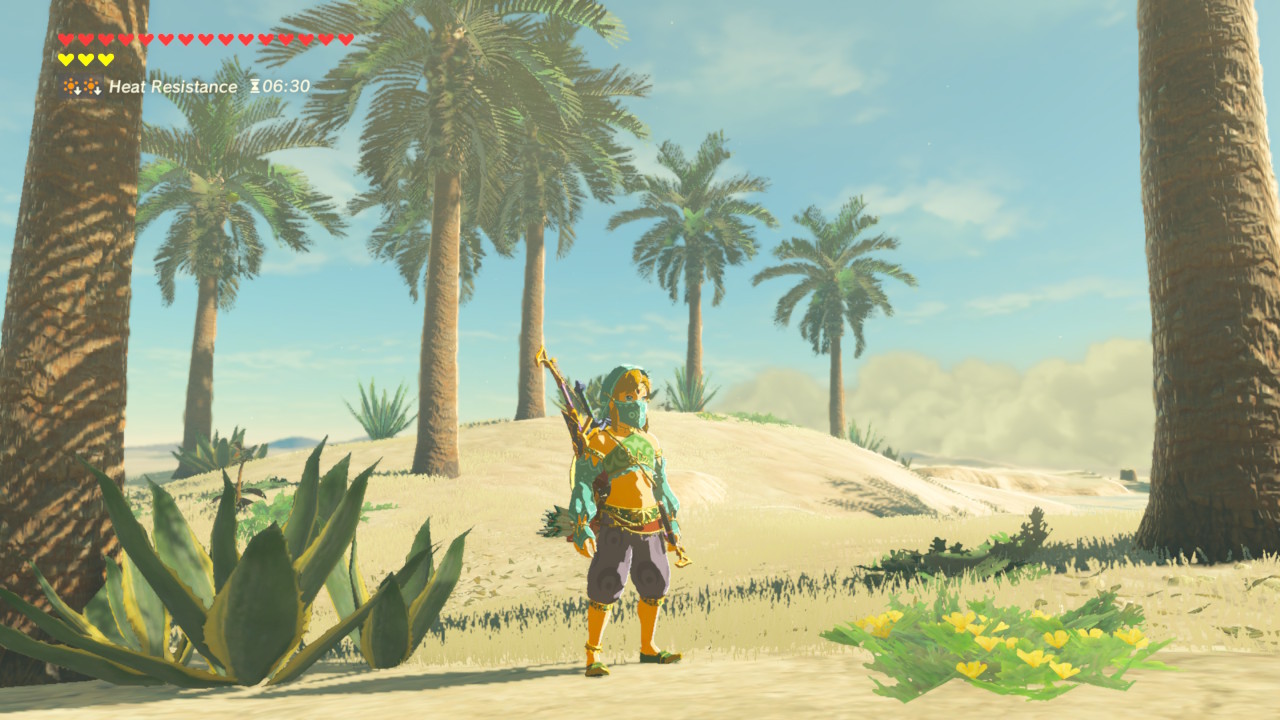

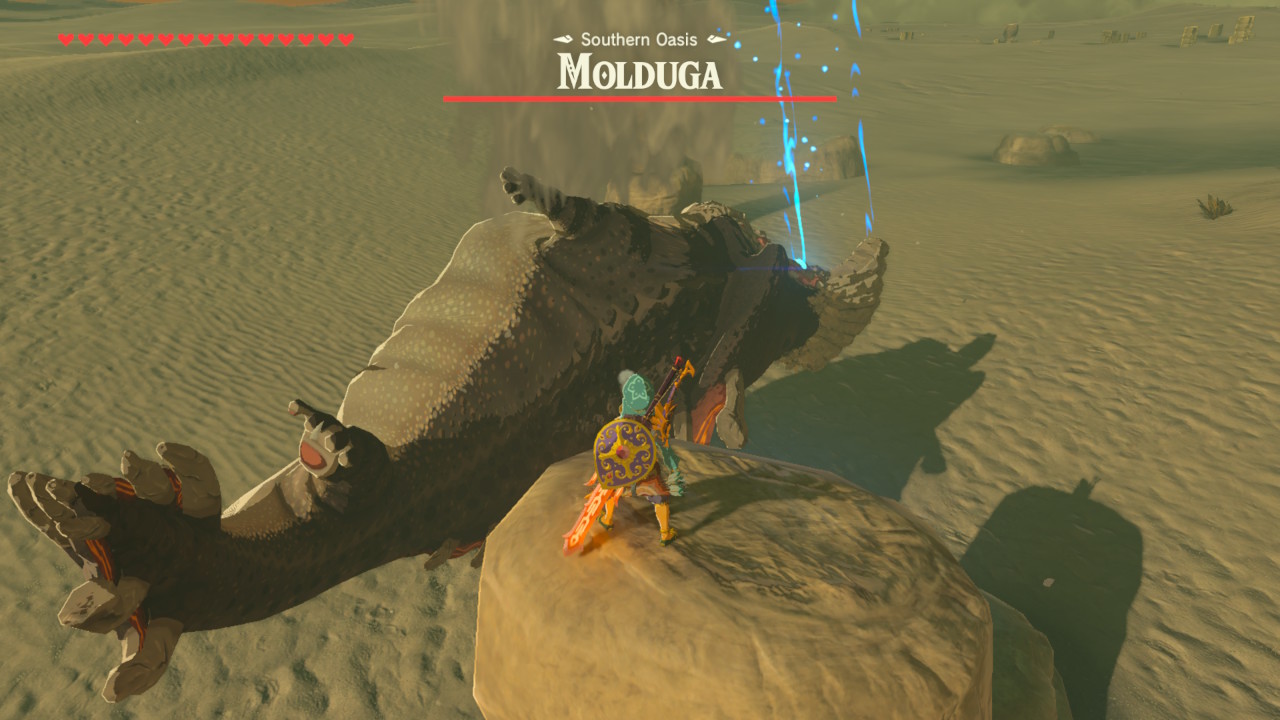
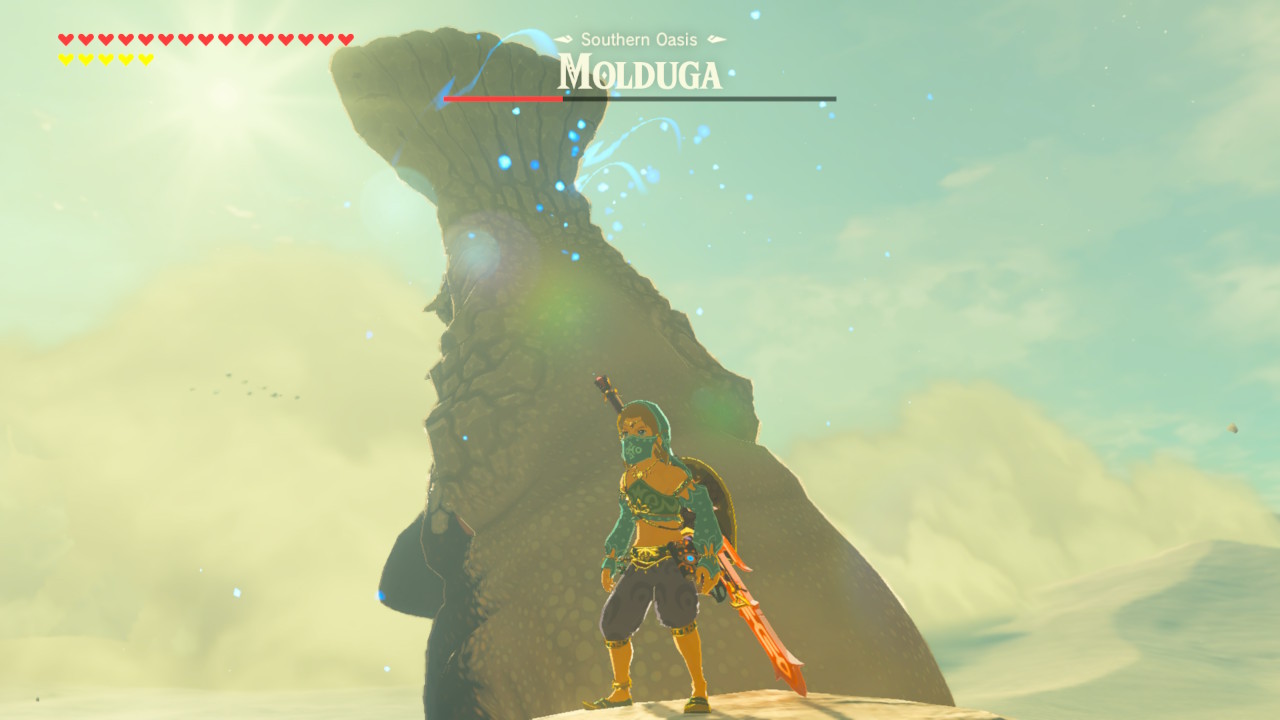

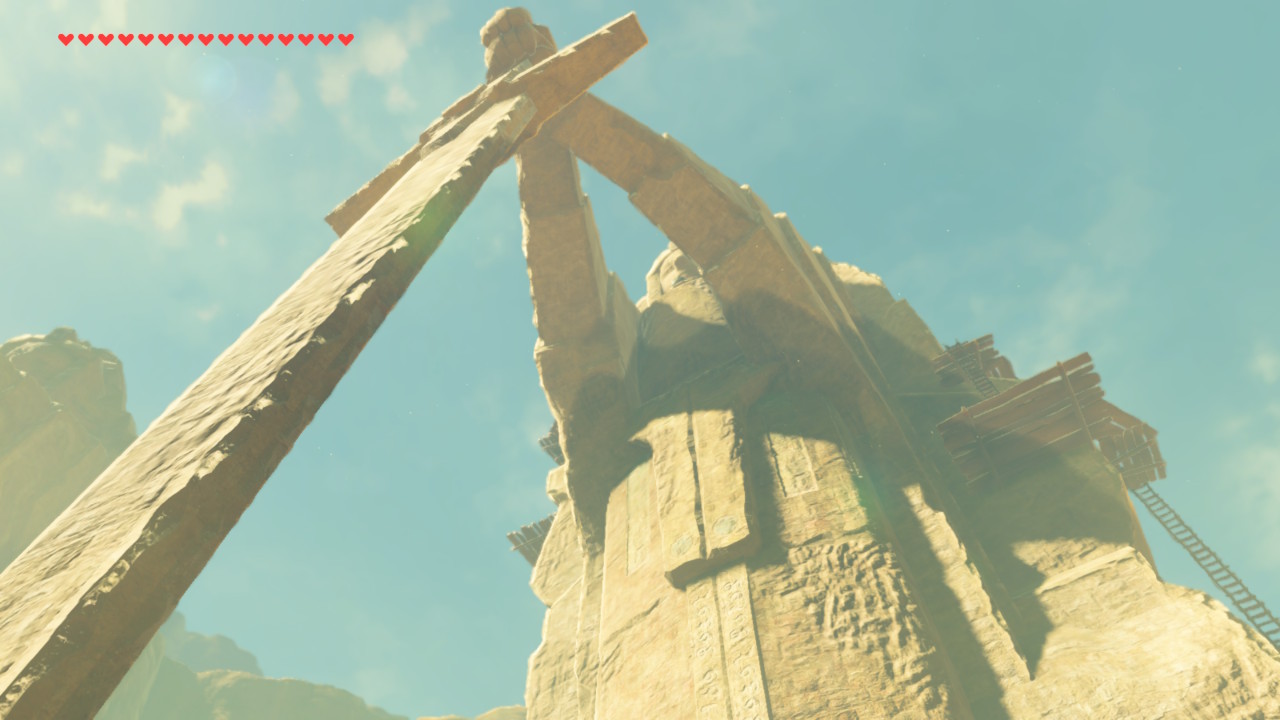
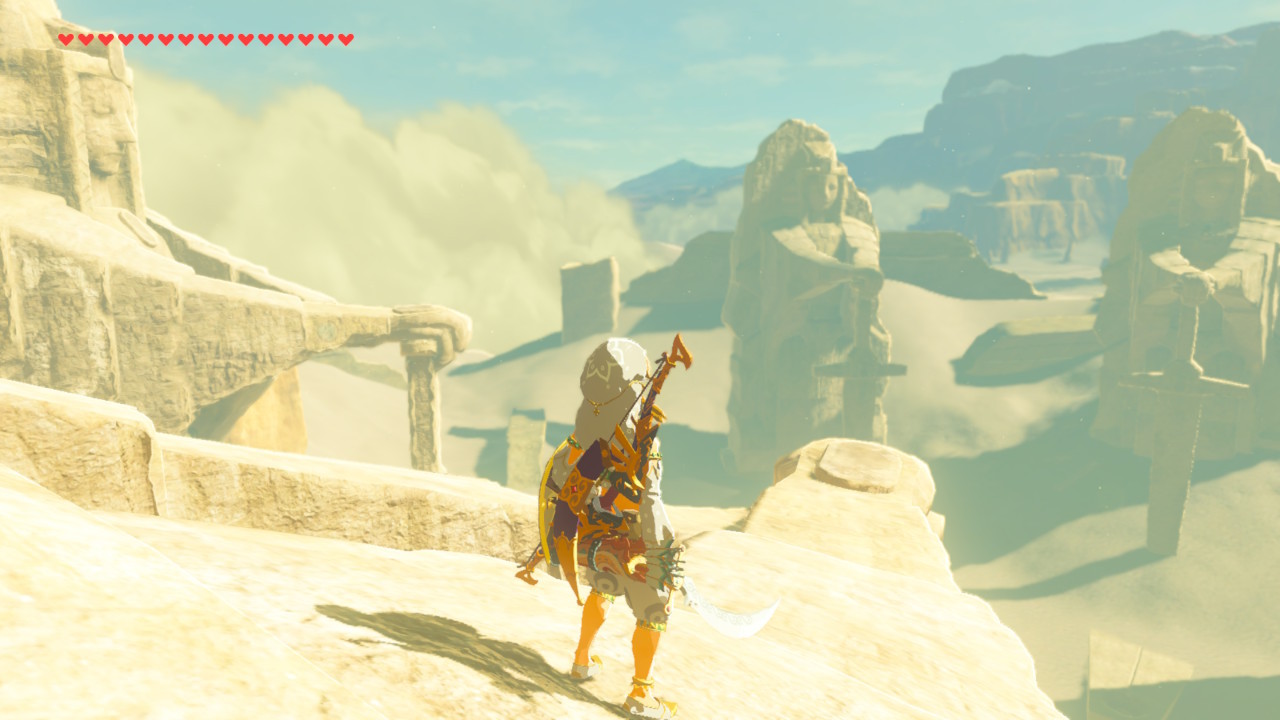

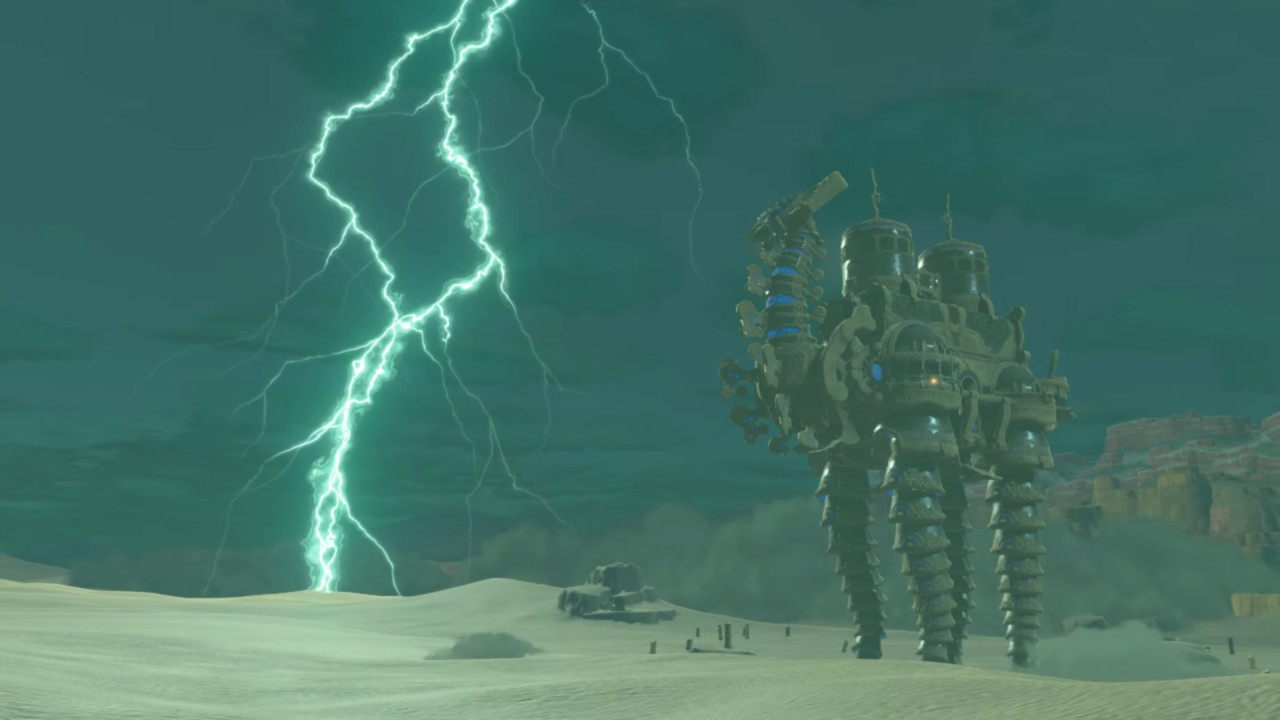

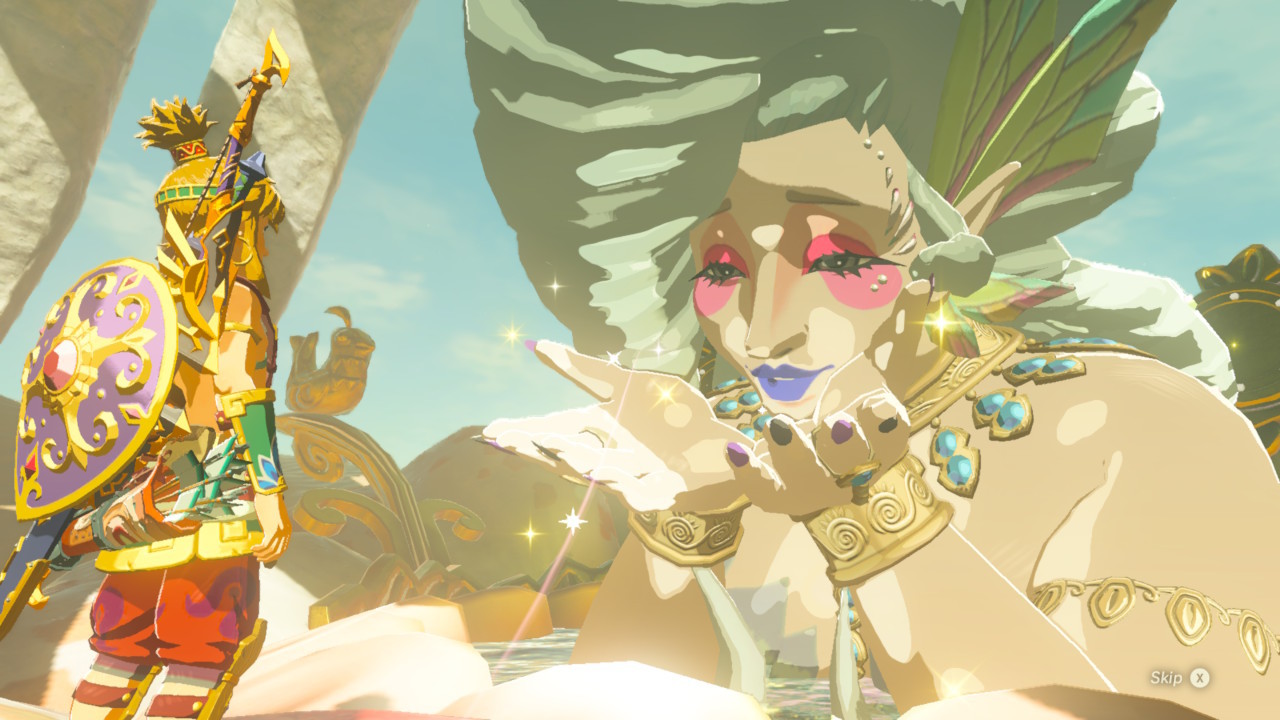


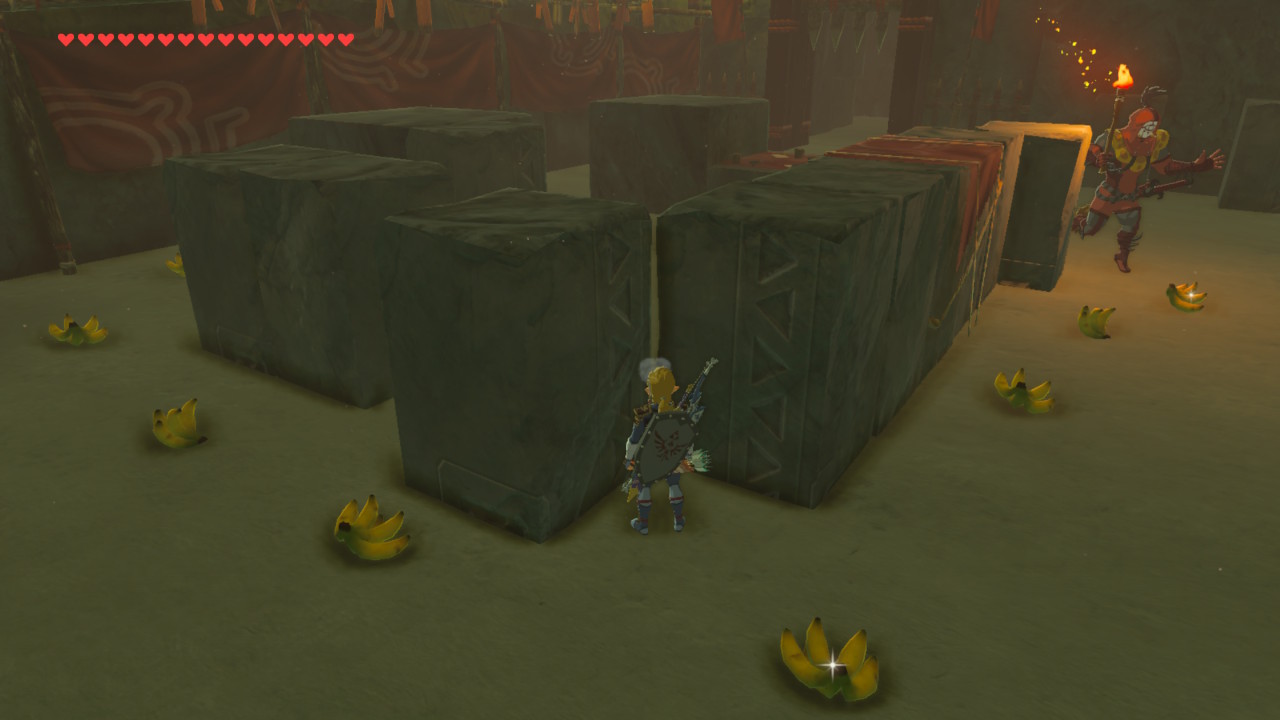
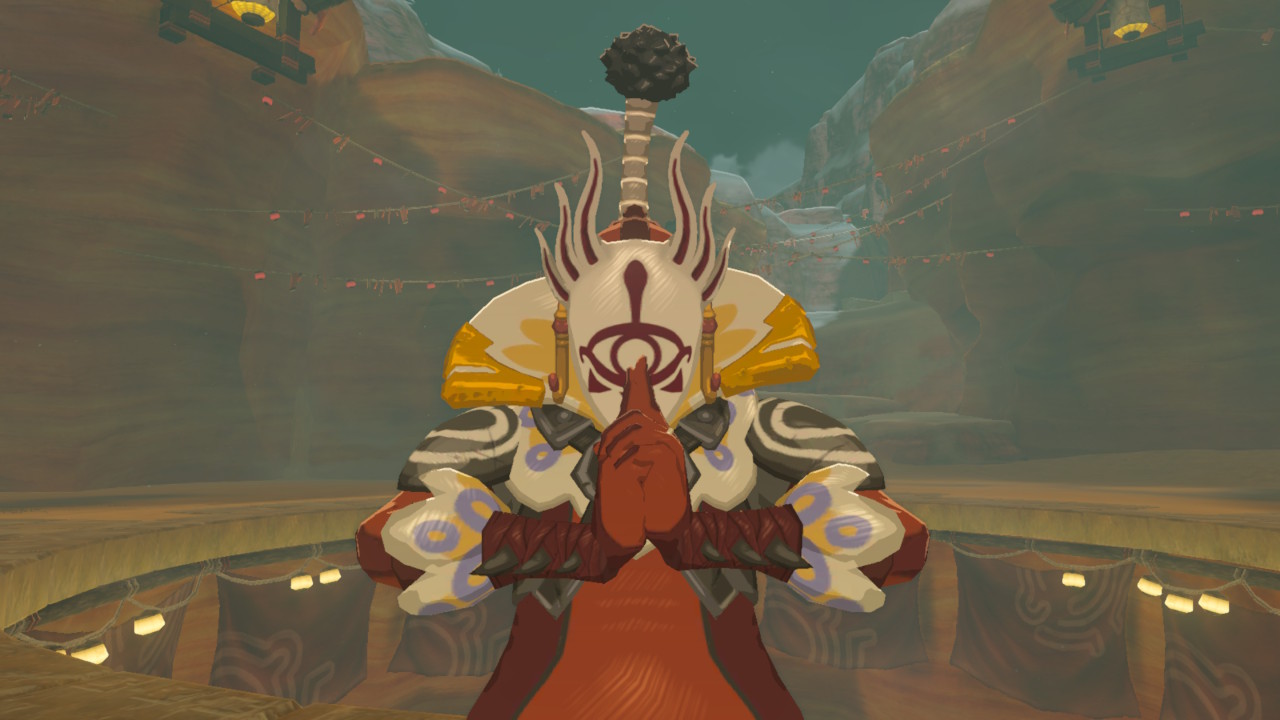
For all its vastness, it's surprisingly easy to navigate, too, even if you're not lassoing one of the sand-burrowing seals. I quickly came across two locations in the desert — Gerudo Town and Kara Kara Bazaar — and this is where I truly fell in love with the region. I'd like to talk about Gerudo Town, in particular.
Simply put, the Gerudo people are awesome. I don't personally care for timeline talk, but I'll concede it's neat to see how the Gerudo have evolved from a ragtag gang of thieves in a bandit camp in OoT to the proud kingdom they maintain in BotW. It has been more than 10,000 years, I suppose!
Within the sun-bleached walls of Gerudo Town is a bustling trade hub — commercial activity that extends to the bazaar down the road. The rock spire above the palace provides an endless wellspring of water, which they channel through town via an elaborate system of aqueducts. The Gerudo have domesticated wildlife (seals) for surfing the dunes, and they mine ice from the highlands for their drinks (and food preservation, I imagine). They maintain a well-trained army, purely for self-defense in the Yiga- and Molduga-infested wastelands. They also preserve their unique language and a strong sense of history, researching countless ruins across the desert — the Swordswomen, the Seven Heroines, etc. To top it off, there's a love/hate relationship with terrible puns! (Sealiously!)
Most intriguing of all is the gendered nature of their community: No men are allowed in Gerudo Town. During the events of BotW, this seems to be purely tradition, since several townspeople are indifferent to Link's true identity and don't mind him there in disguise. But I find the implications interesting.
I think the suggestion is they're trying to preserve their cultural identity, which might otherwise be lost since they're constantly courting men of other races — an absolute necessity when a Gerudo male is born only once every 100 years. However, there are women from other races in town, so there's still some cross-cultural mingling that is taking place. Maybe the "girls only" rule is more about providing a safe haven where women can learn about men and the real world before venturing out there themselves. The relationship classes and cooking classes come to mind. Their gendered culture might be predicated on the sisterly notion that women simply understand each other in a way that men don't.
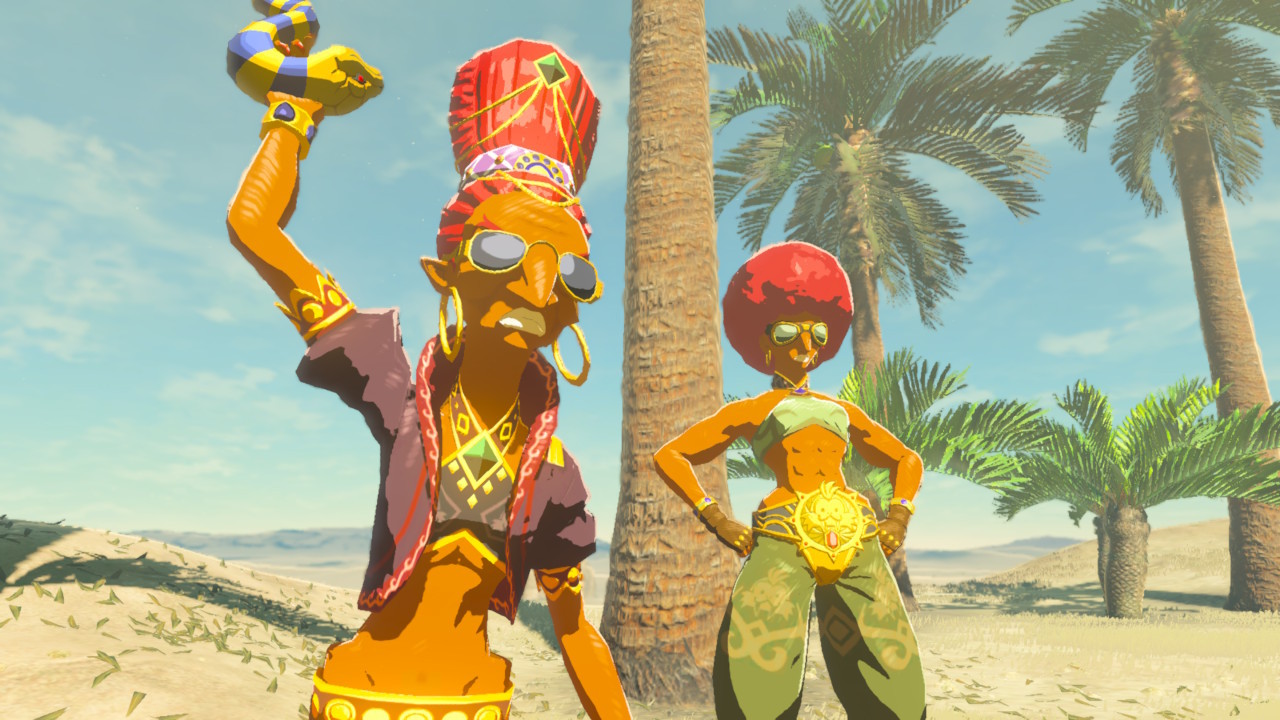
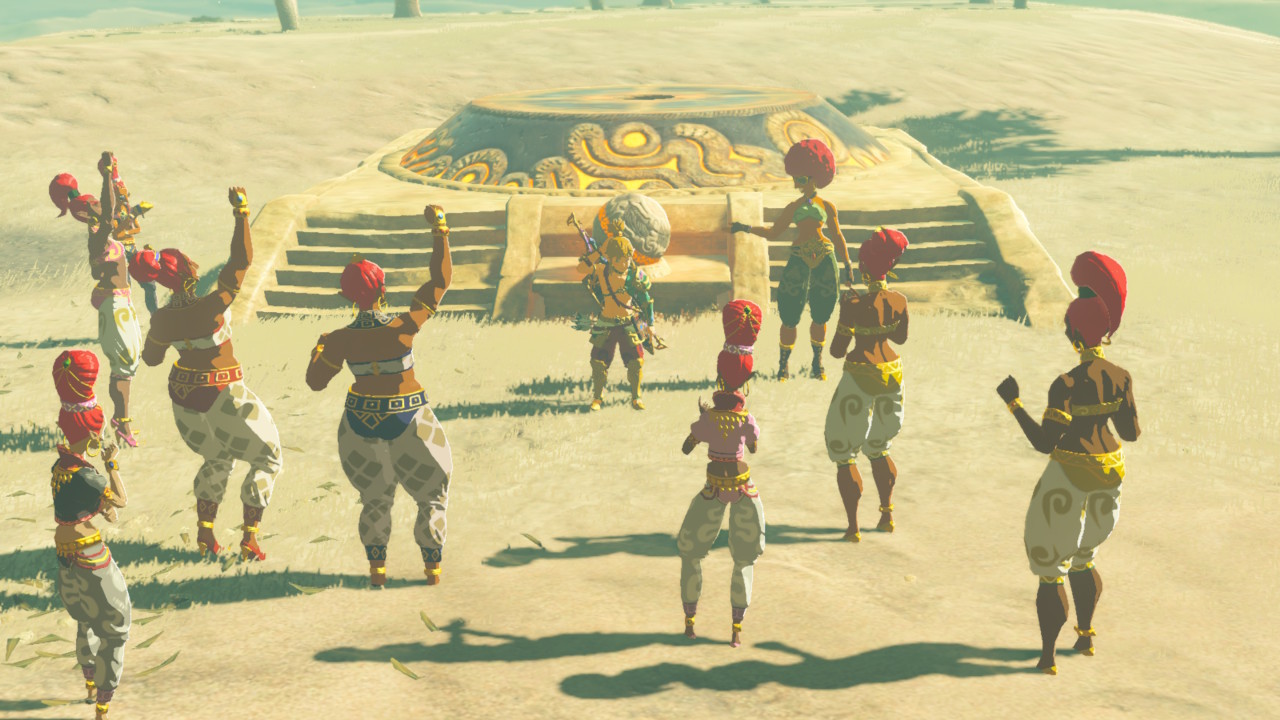

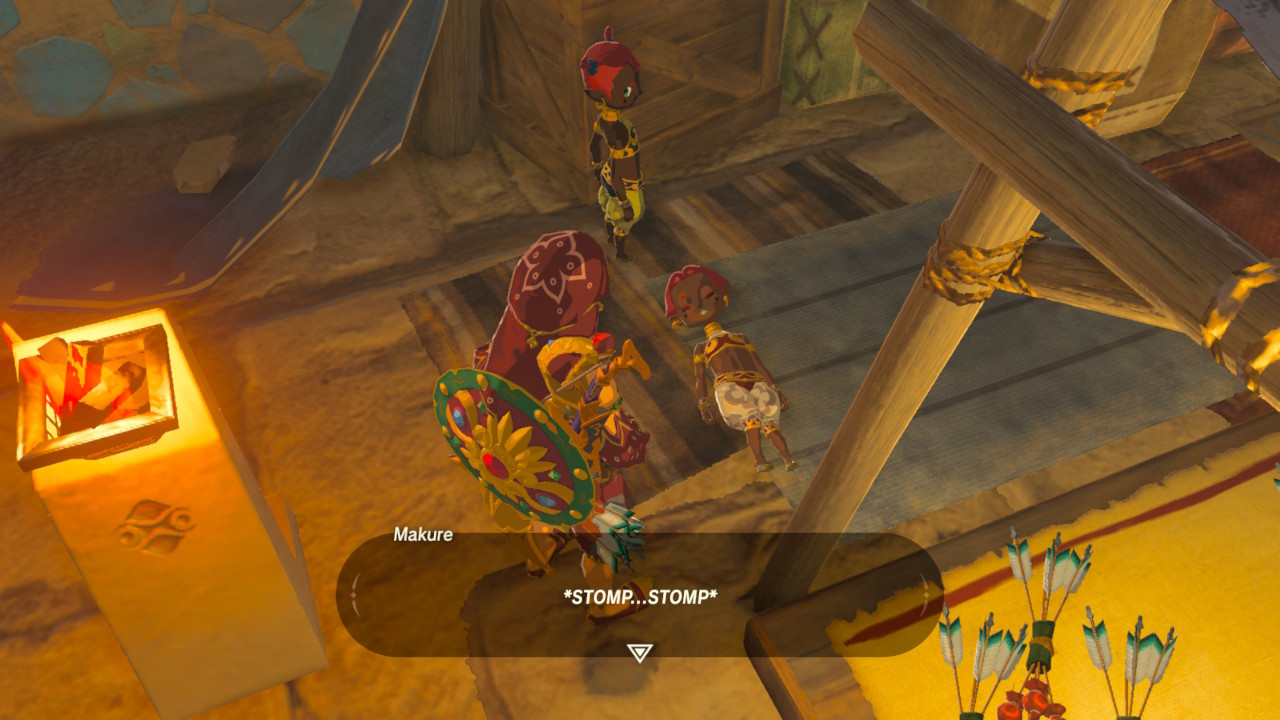

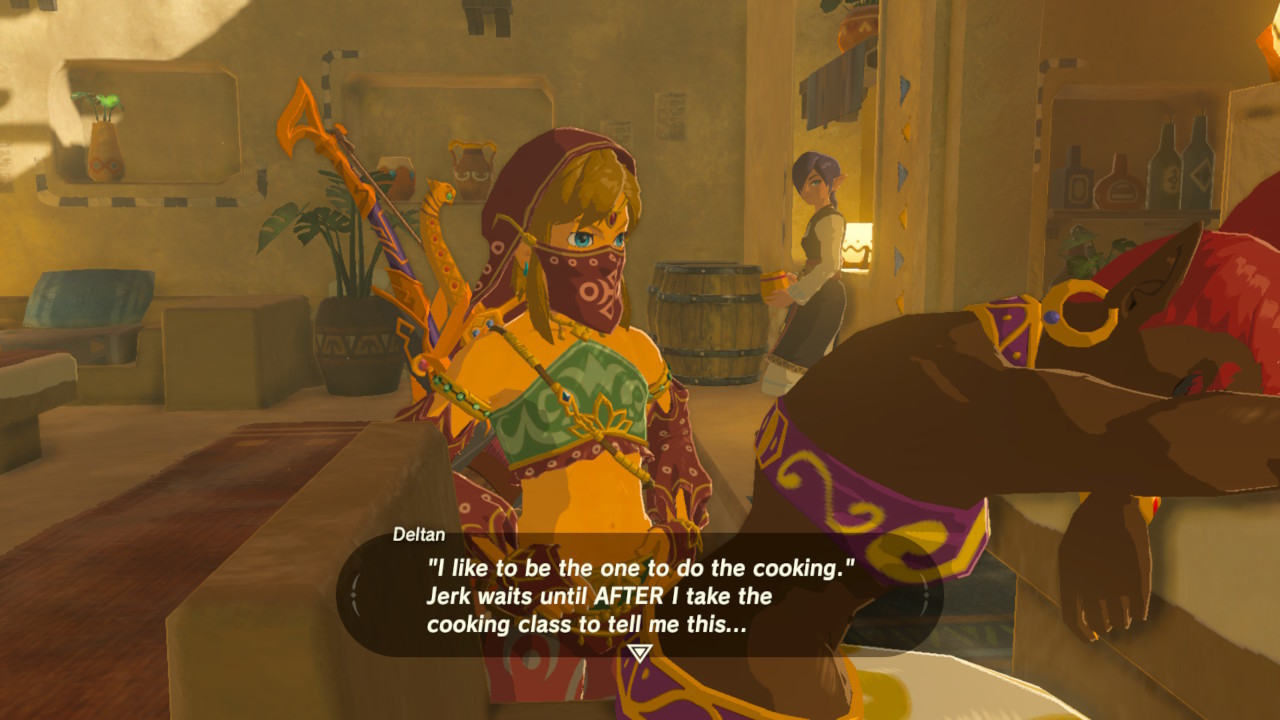
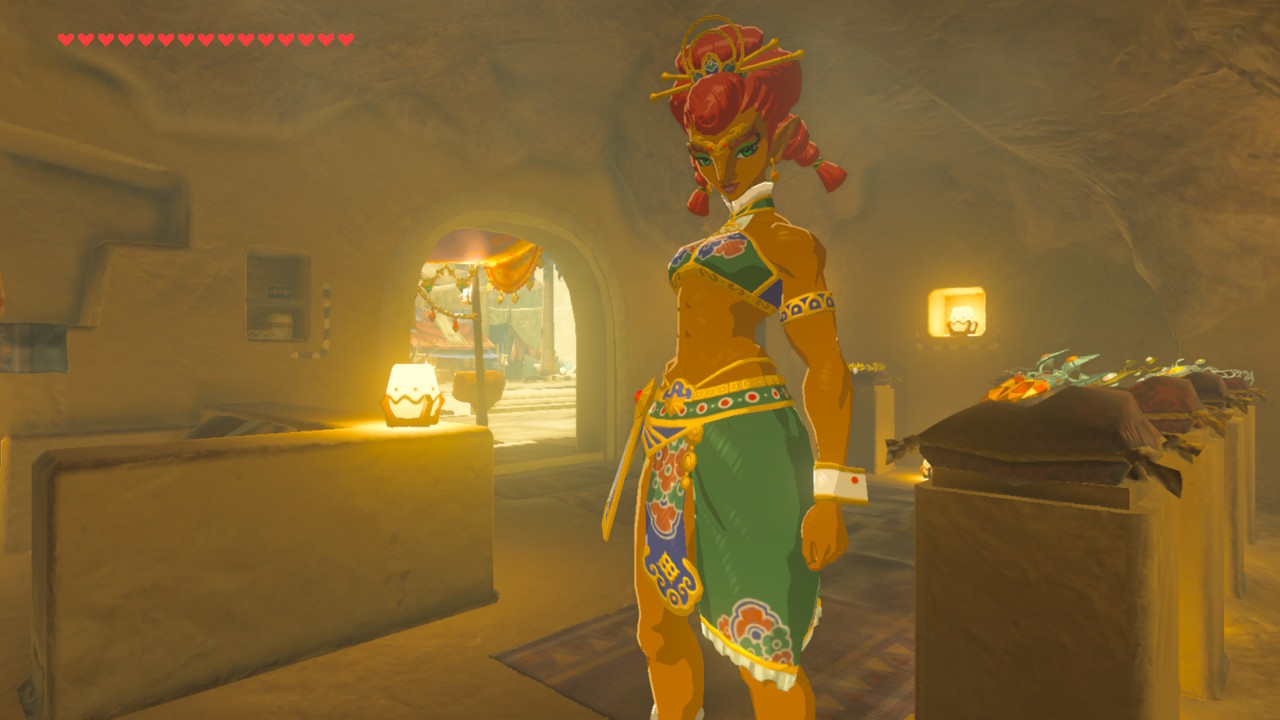

Whatever the case, the gendered nature of Gerudo Town gives it a unique feel. And in a refreshing twist for videogames, the women there come in all shapes, sizes, and skin tones. You still have Amazonian women with chiseled abs and rock-hard muscles, of course, but you also have plus-sized middle-aged women and slender elders. You have the familiar orange skin tone from past games, but you also have darker and lighter tones. You even see Gerudo kids, who are already tall compared to other kids in Hyrule. (For this reason, I wonder if Riju — their young chief with normalized proportions — is actually just short!) Naturally, being a female-only society, women also run all aspects of town: business, military, administration, recreation, research. It's wonderful to see such diversity on display. Nothing feels exploitative, either. In the hands of another dev, the temptation might've been there to sexualize the designs of the Gerudo, but in BotW they're treated with dignity, each of them beautiful in their own way.
Here are some scope shots I took of people around Gerudo Town:

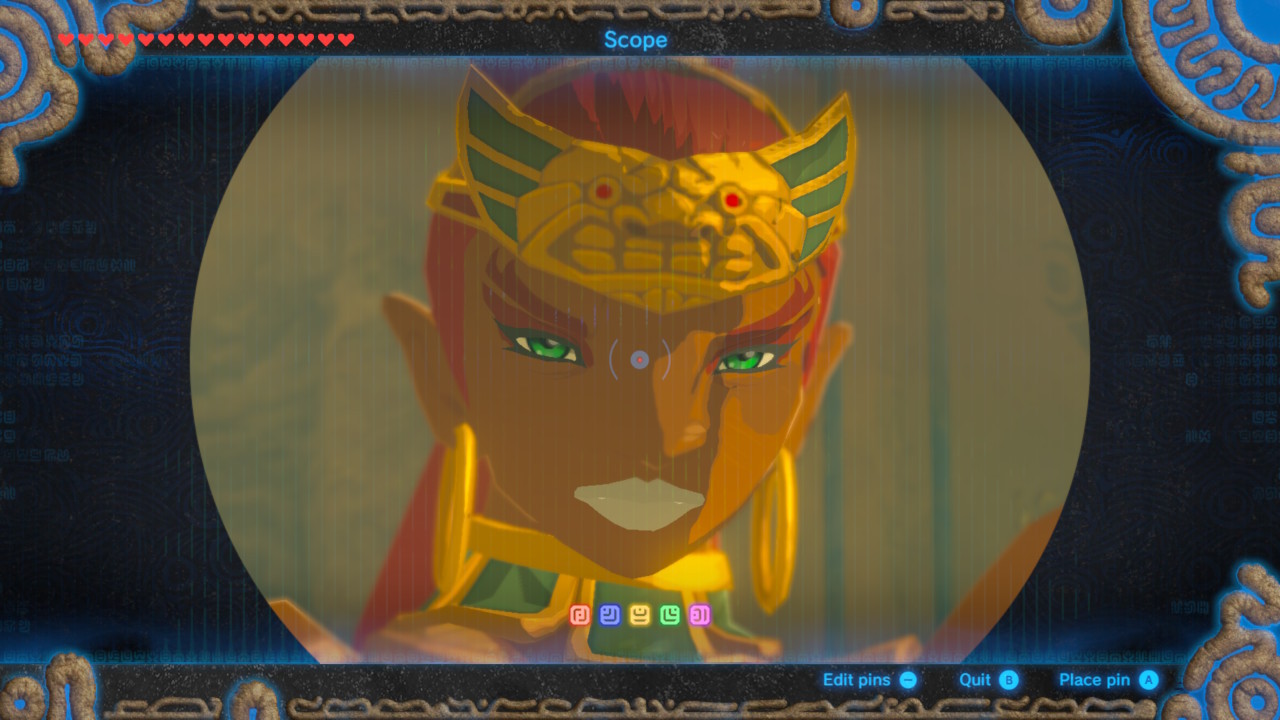
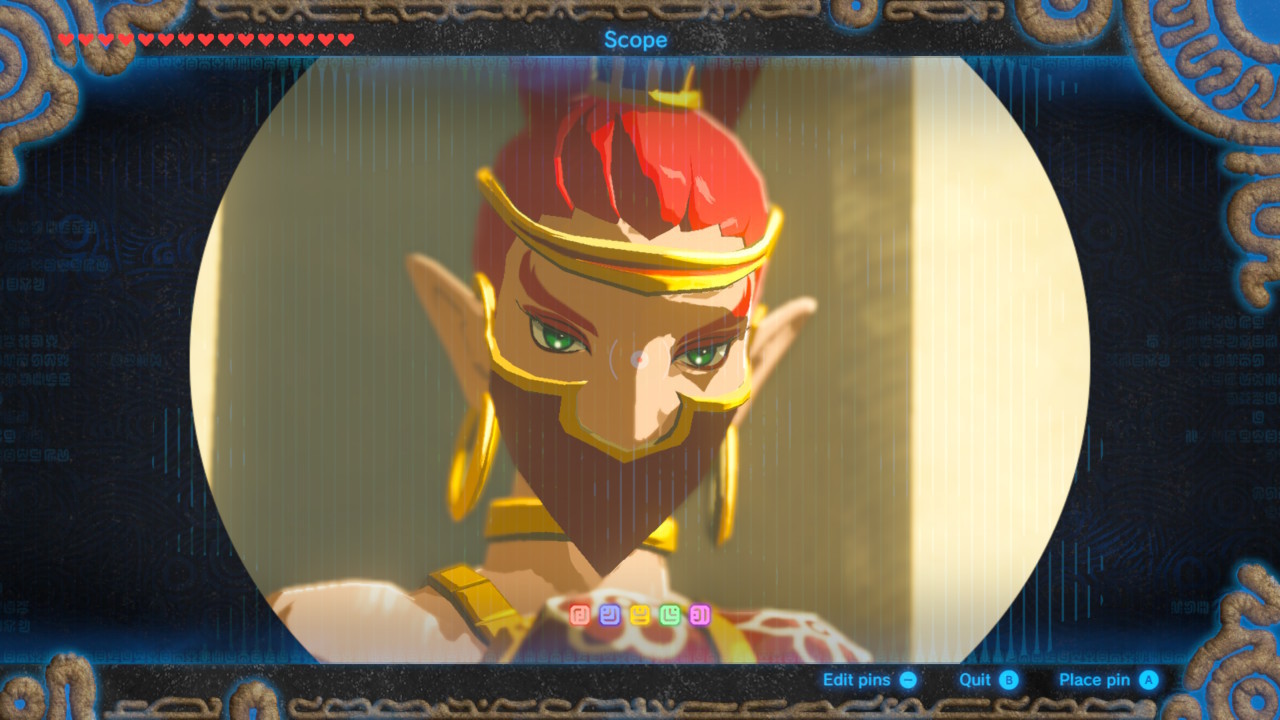

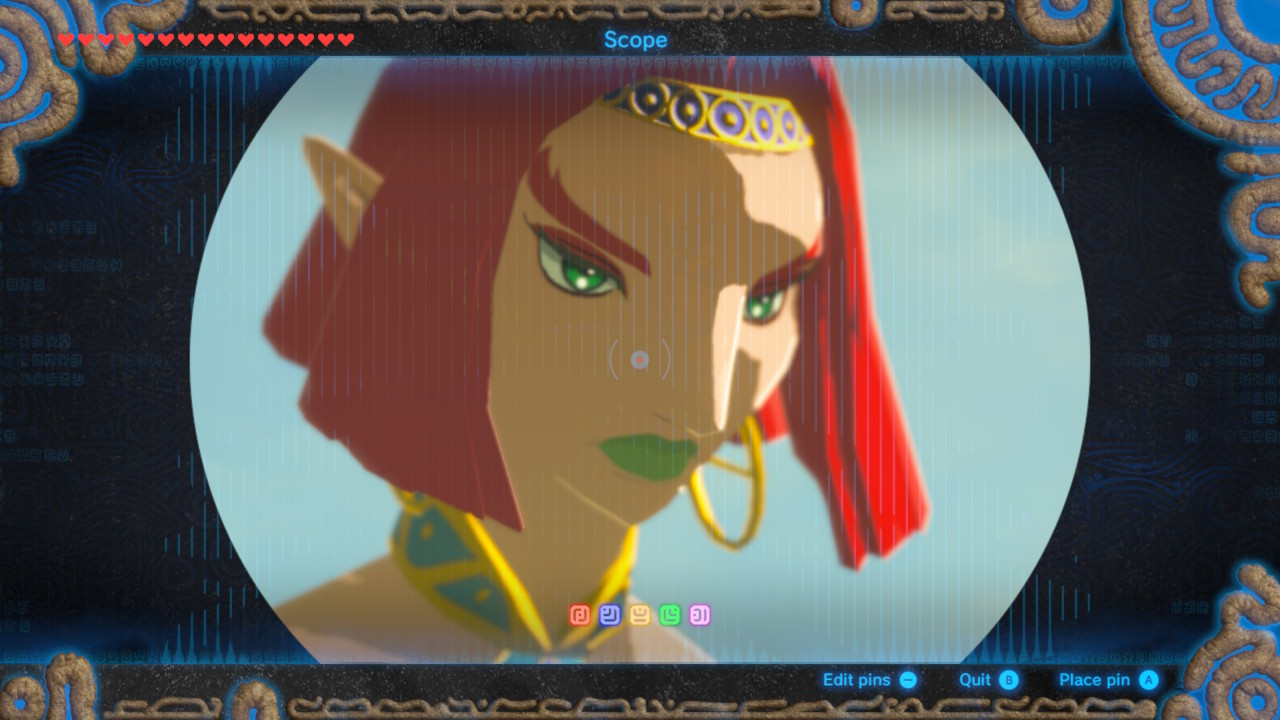
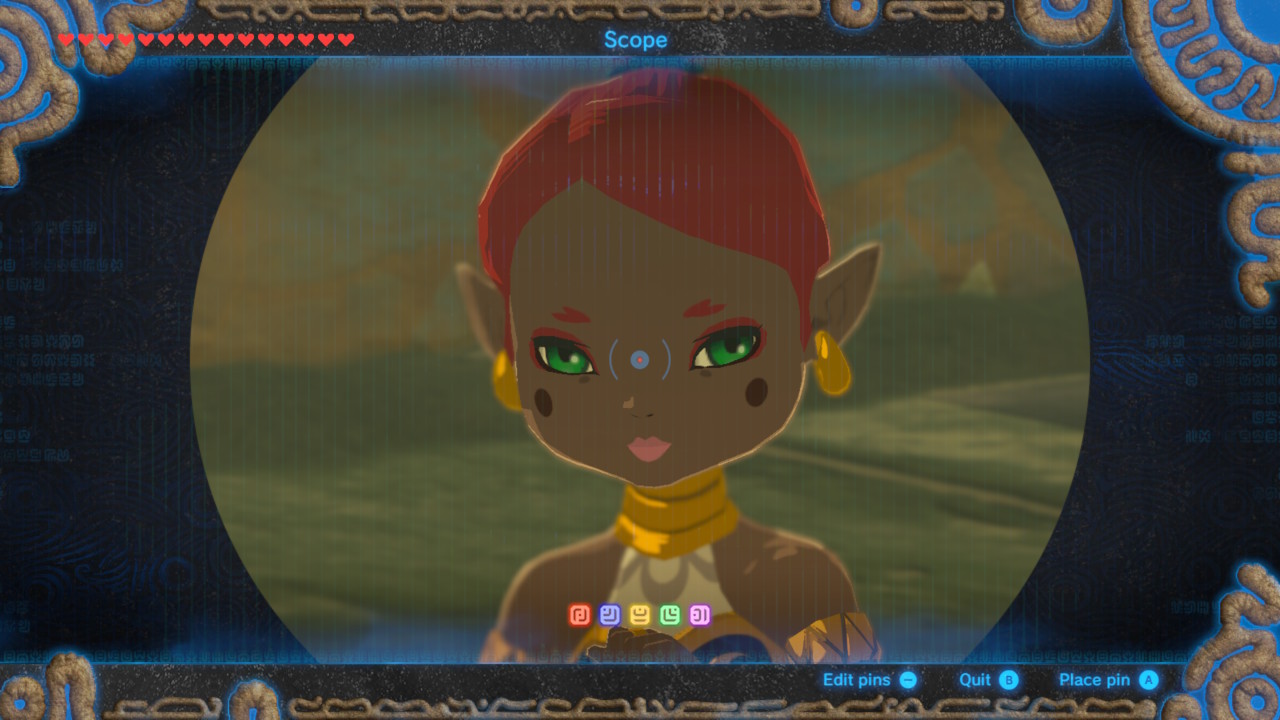
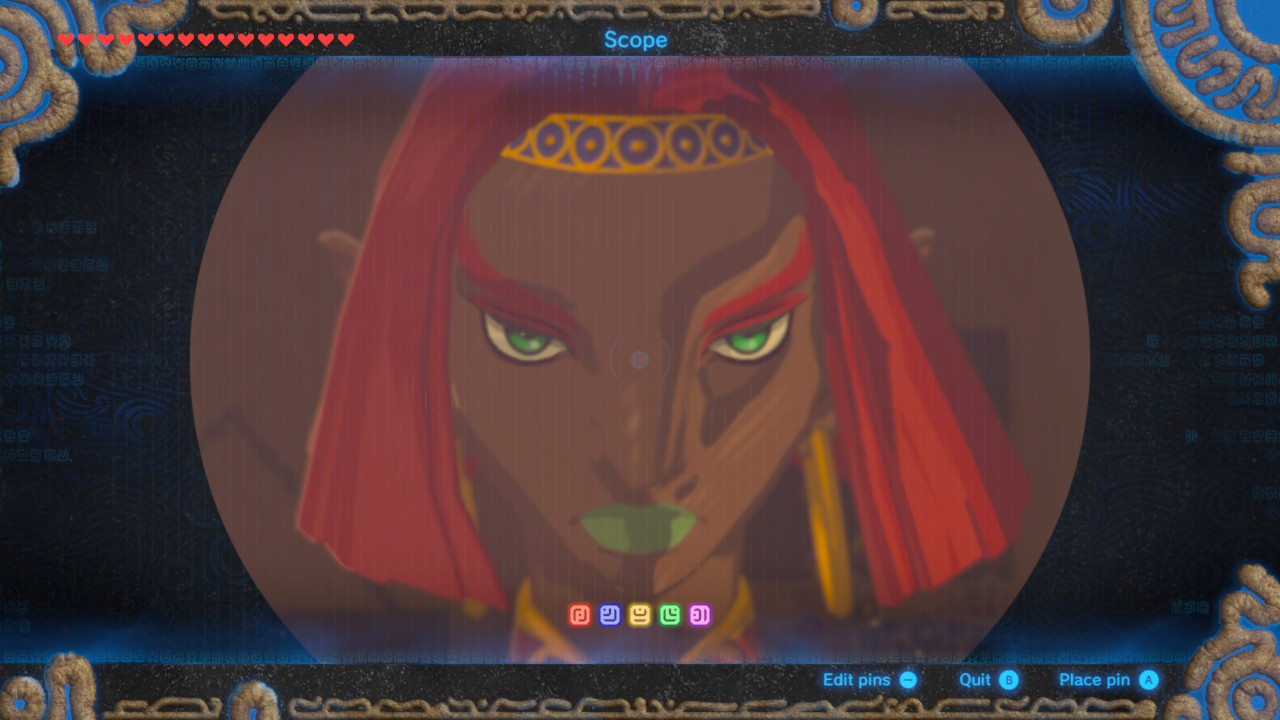
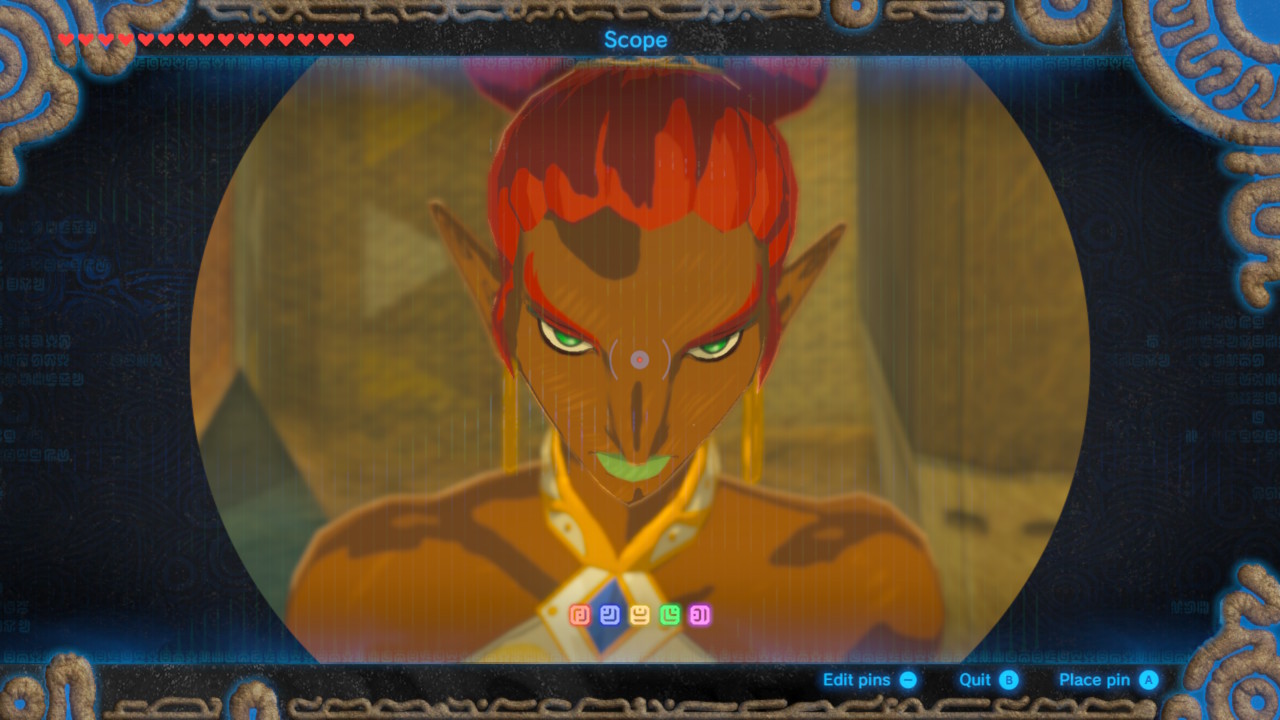


Oh, and I mentioned Riju. I just adore this character. Once you complete Divine Beast Vah Naboris, she tasks you with helping her people. In exchange, you'll earn the privilege to borrow her treasured heirloom, the Thunder Helm. And once you have the Thunder Helm, she begins a Majora's Mask-like routine, moving around her palace with different stops (and dialogue!) at different times of the day. Many NPCs do this, to some degree, but it seems especially detailed with Riju. She'll go to her diary, pray at her mother's shrine, sleep in her bed dreaming about her mother, and visit the pavilion in Patricia's pen. Her diary also updates in time, with some vulnerable reflection as she doubts her ability to lead.
She's just a lovable character with a fabulous design. Here's hoping we'll see her more in the future, be it the story content in DLC Pack #2, or even a spinoff appearance in a potential Hyrule Warriors 2. Imagine her racing across the battlefield with her sand seal!


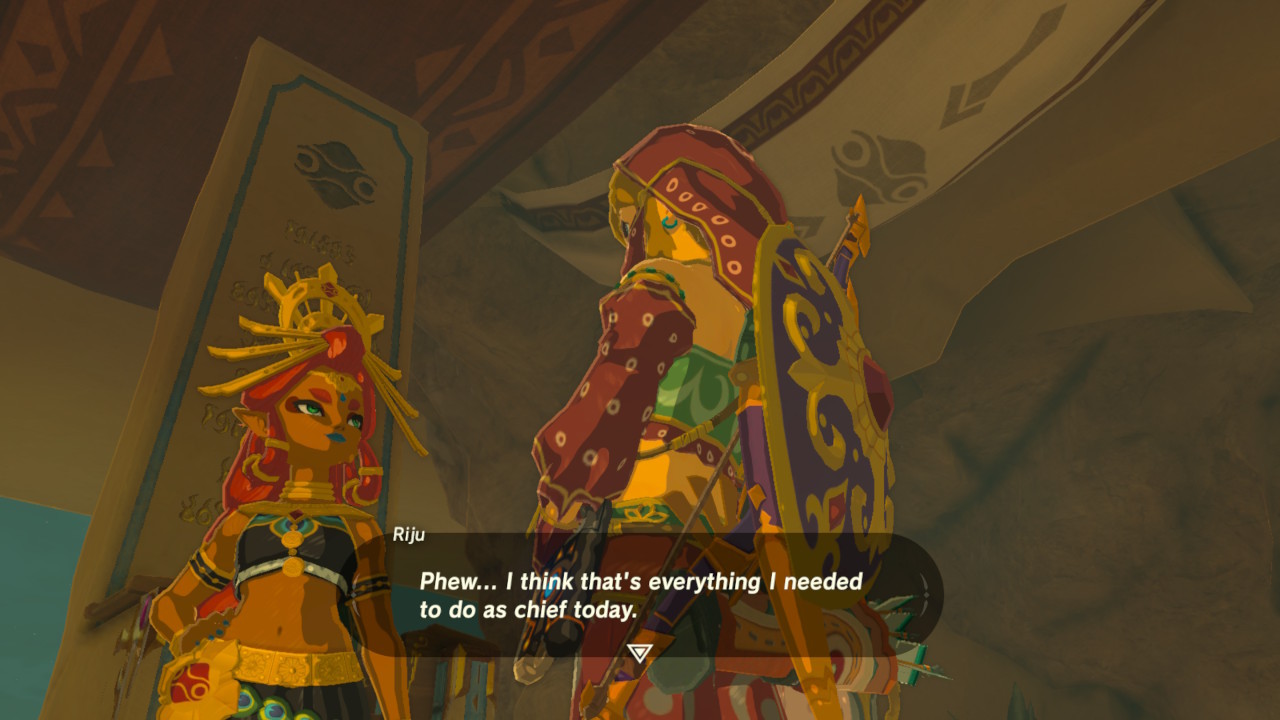
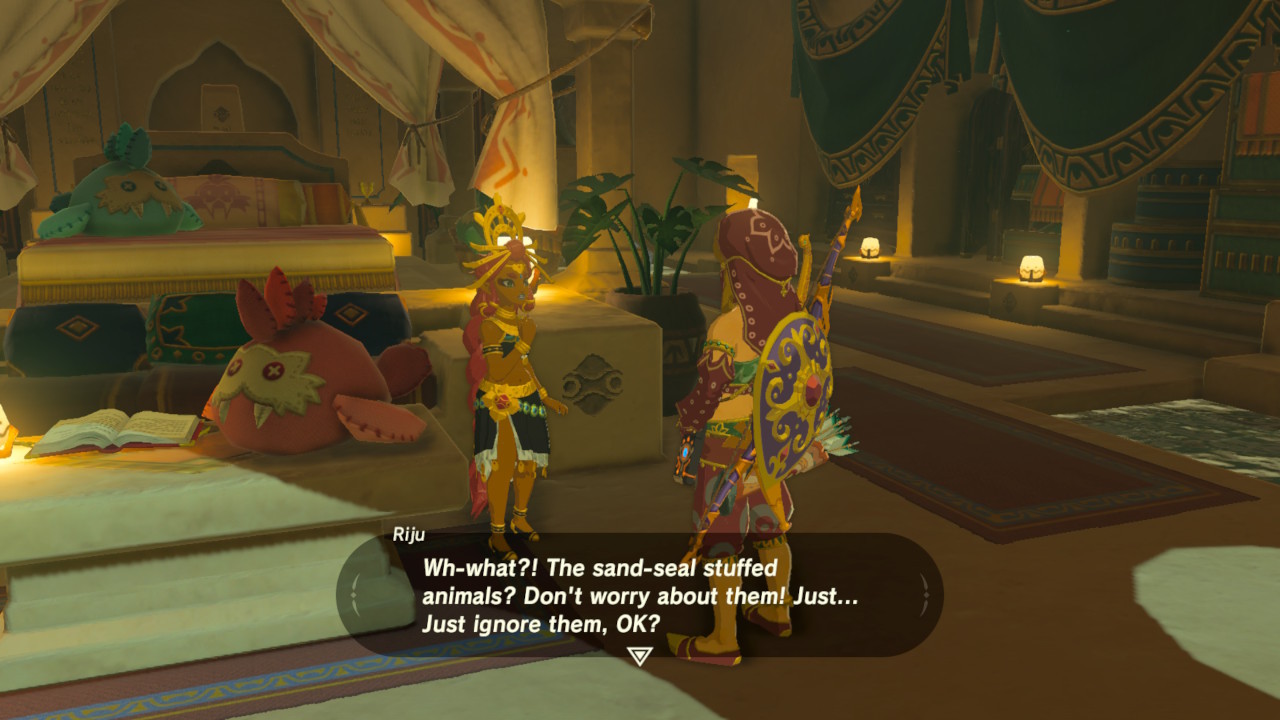
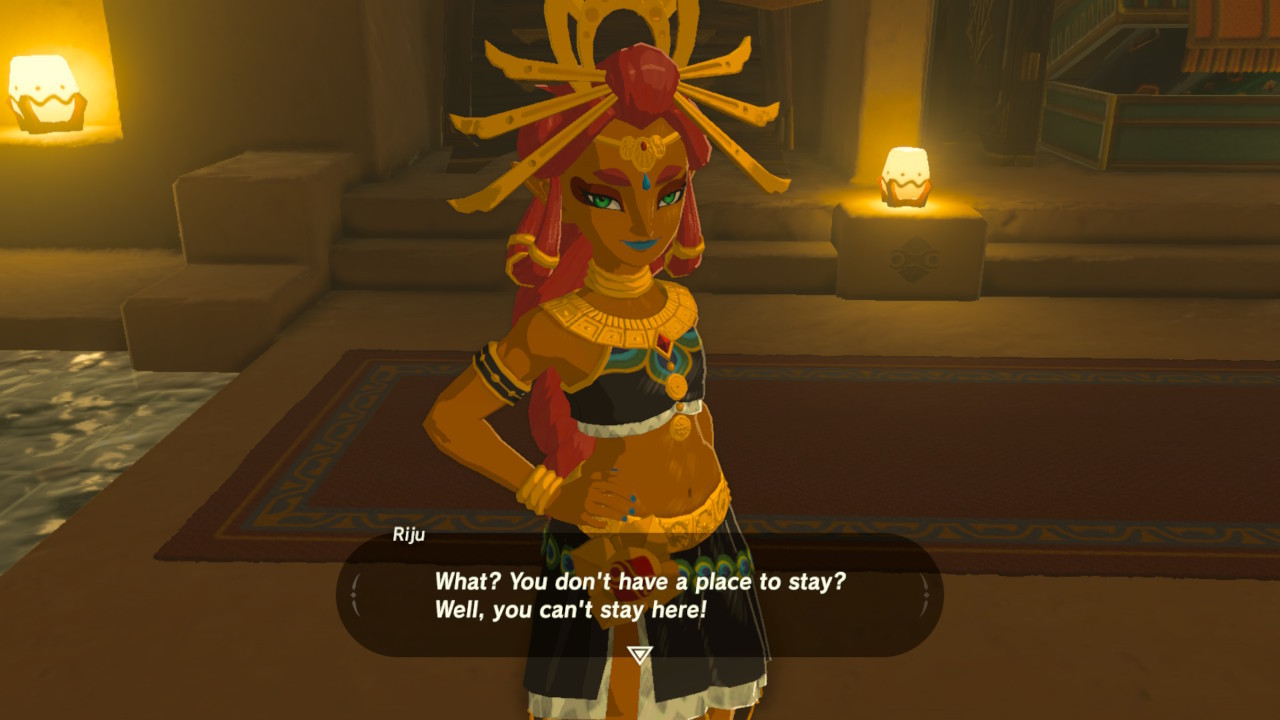
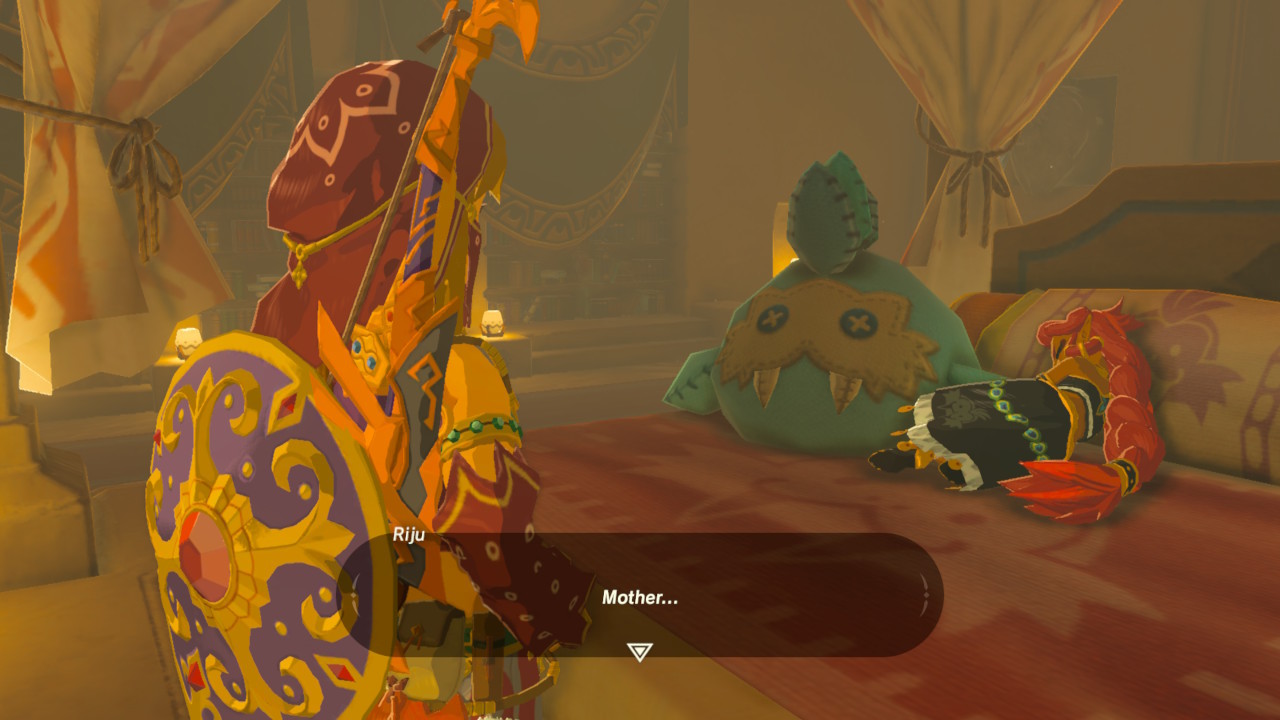


I also love the design for Urbosa. Such a strong, striking figure. Her calm and measured voice matches her statuesque figure perfectly. Makes her even more badass! (The heels seem impractical for walking in sand, though.)
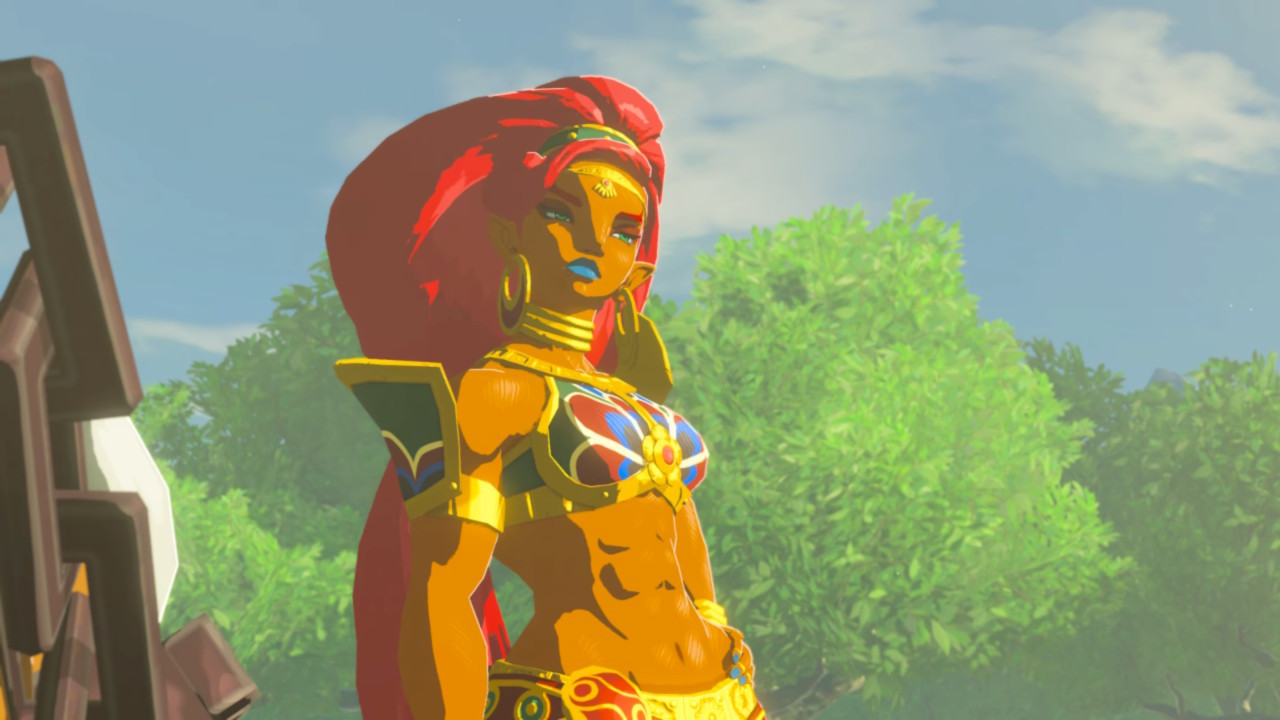
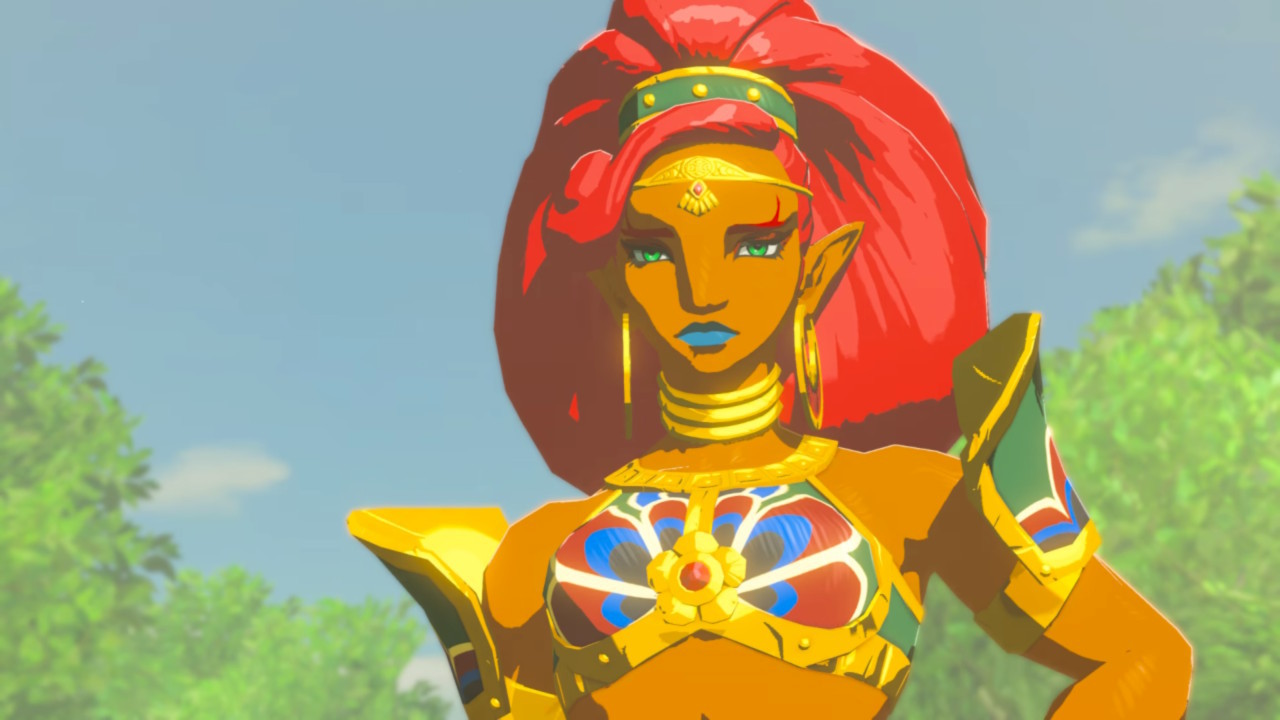
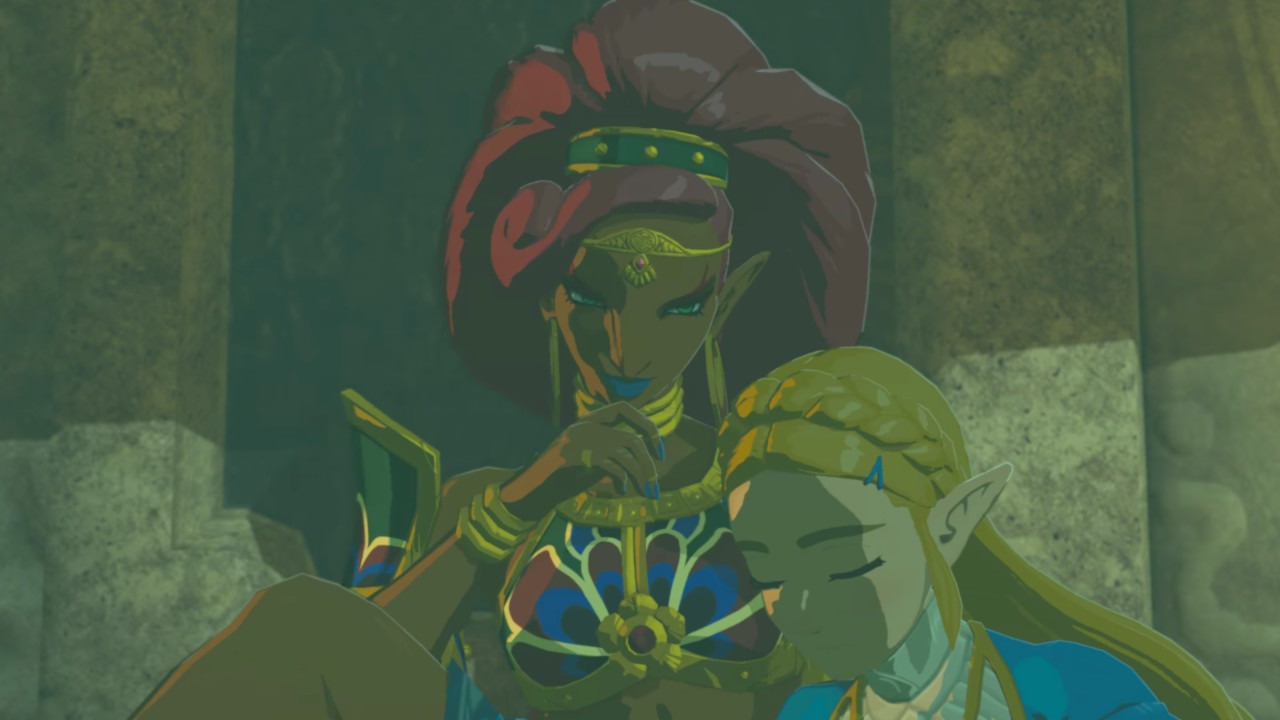
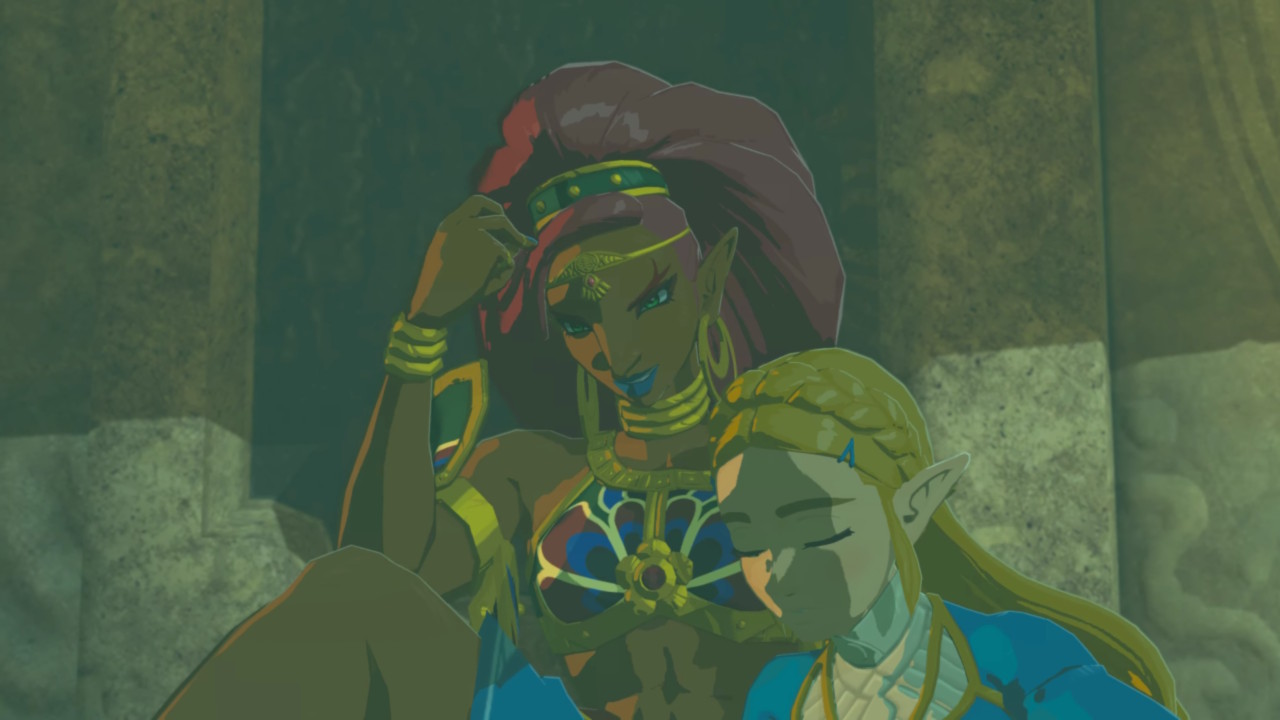
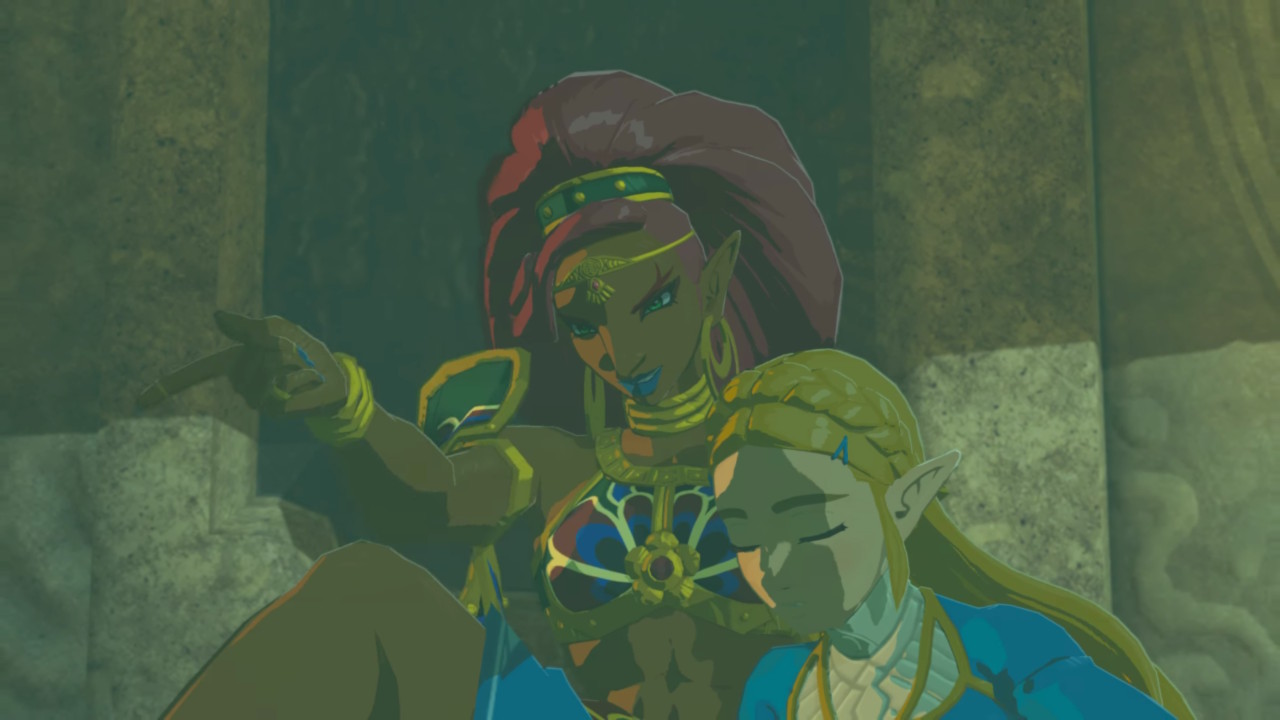

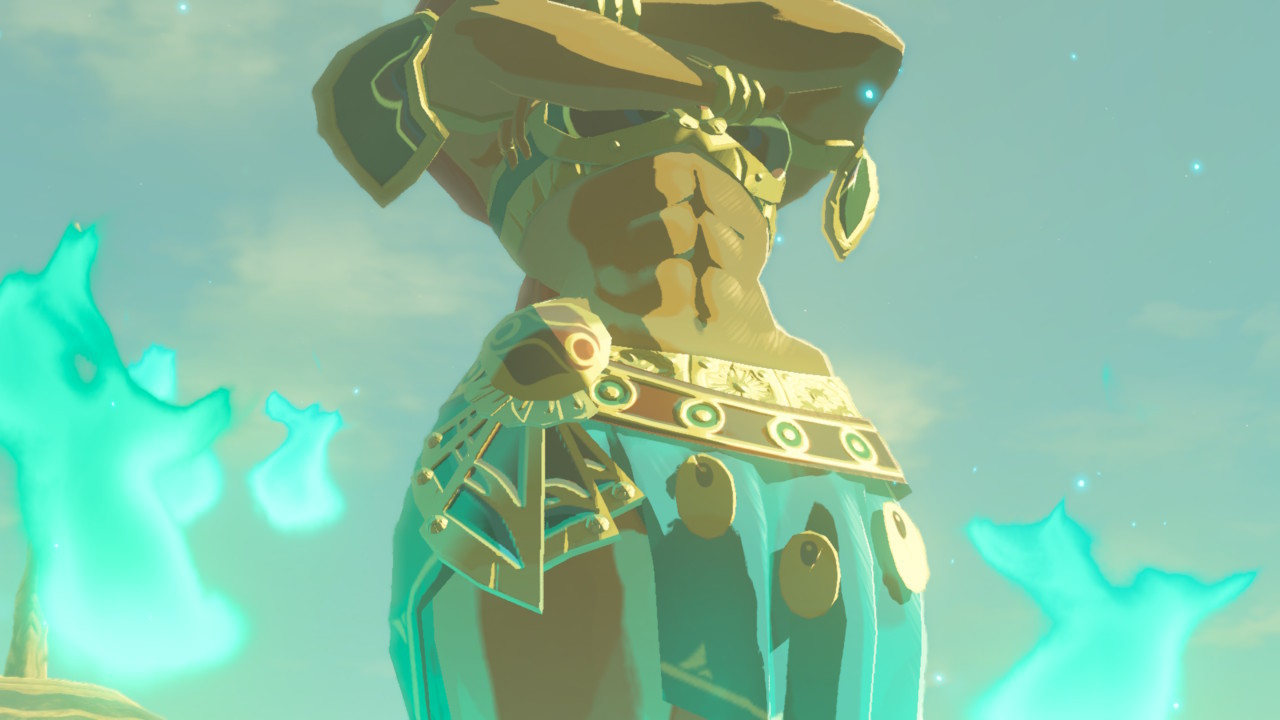
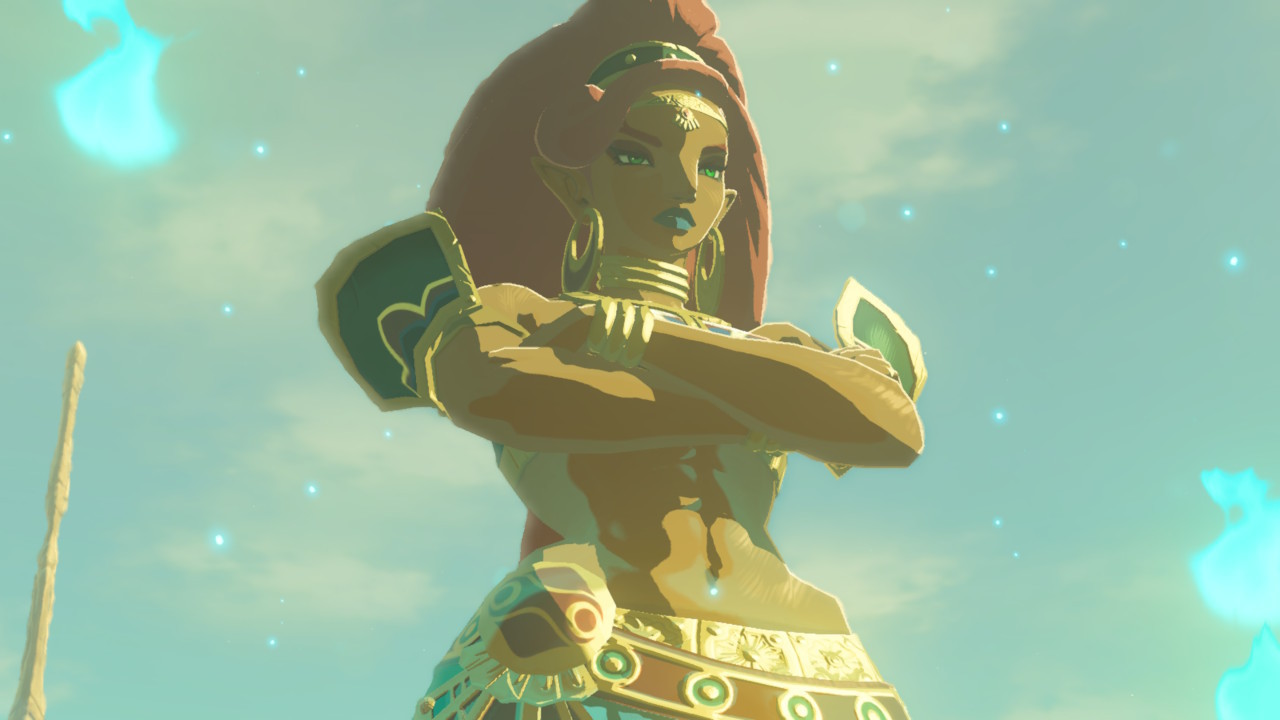
I also enjoyed the Gerudo's depiction in OoT and MM, but they really went all-out in BotW, creating a rich tapestry of diverse characters and world-building detail. It's nice to see the Gerudo rise above their humble origins as thieves and become perhaps the most sophisticated group in post-apocalyptic Hyrule. :-)
So how'd you like the Gerudo in BotW? Where do they rank for you among the Gerudo, Goron, Rito, Zora, Korok, Sheikah and Hylians? What are your thoughts on how BotW handles diversity, and what are your thoughts on its art direction in general?
My main focus starting off is the Gerudo women, including their culture and region.
The following is the original thread from April 2017, with light edits:
#########
I love pretty much everything about BotW — the most fun I've had in a videogame since MGSV, and the first game to dethrone RE4 as my all-time favorite. But I'm trying to keep this focused!
I've put in 275 hours and taken 4,000+ screenshots. I adore this rendition of Hyrule and its people — from the Rito now resembling actual birds (osprey! macaws!), to the adorable kids in every village that scamper around going "Hoo! Hah! Hoo! Hah!" (Whenever rain-slick surfaces or broken weapons have you down, just remember you're doing it for the kids!)


But of all the wonderful people and places in Hyrule, I think the Gerudo stand out the most… and not only because they stand over 8 feet tall! It's also their diversity and their culture — by far the most developed in the game — and the well-designed region they inhabit.
Deserts don't usually do much to capture my imagination. I find them to be a bit, well, dry! So I really dragged my feet traveling southwest. The idea of a barren wasteland just didn't seem appealing next to the prospect of dew-dappled grasses swaying in a mountain breeze, or autumnal landscapes in the shadow of an active volcano, or lush tropical jungles leading down to the beach. I'm also a sucker for the constant rain (yes, slippery slopes and all!), and I knew there wouldn't be any in the desert.












It almost felt like a whole new game when I got there, gliding unaware over the Gerudo Canyon stable, which I didn't discover for another 50+ hours!
The desert region is walled off from the rest of Hyrule by way of the Gerudo Highlands that block your view of Hyrule Castle and Death Mountain — two landmarks that serve as reference points for just about every other region. As such, the desert feels like its own little world. And immediately I was taken with its deeply immersive weather system.
During the day, certain areas are scorching hot, requiring you to stay in the shade of stone structures or moving clouds, equip heat-resistant clothing or ice-infused weaponry, or to consume meals and elixirs with a cool-down effect. But soon enough, the sun sets, and temperatures plunge, requiring you to warm up instead. Chalk it up to the strong art direction and convincing wind effects, but when Link feels hot or cold, so do I — and the ability to engage this as a gameplay mechanic immediately made the desert more compelling than in games prior.
Here are some random scenes from around the Gerudo region (both highlands and desert):


















For all its vastness, it's surprisingly easy to navigate, too, even if you're not lassoing one of the sand-burrowing seals. I quickly came across two locations in the desert — Gerudo Town and Kara Kara Bazaar — and this is where I truly fell in love with the region. I'd like to talk about Gerudo Town, in particular.
Simply put, the Gerudo people are awesome. I don't personally care for timeline talk, but I'll concede it's neat to see how the Gerudo have evolved from a ragtag gang of thieves in a bandit camp in OoT to the proud kingdom they maintain in BotW. It has been more than 10,000 years, I suppose!
Within the sun-bleached walls of Gerudo Town is a bustling trade hub — commercial activity that extends to the bazaar down the road. The rock spire above the palace provides an endless wellspring of water, which they channel through town via an elaborate system of aqueducts. The Gerudo have domesticated wildlife (seals) for surfing the dunes, and they mine ice from the highlands for their drinks (and food preservation, I imagine). They maintain a well-trained army, purely for self-defense in the Yiga- and Molduga-infested wastelands. They also preserve their unique language and a strong sense of history, researching countless ruins across the desert — the Swordswomen, the Seven Heroines, etc. To top it off, there's a love/hate relationship with terrible puns! (Sealiously!)
Most intriguing of all is the gendered nature of their community: No men are allowed in Gerudo Town. During the events of BotW, this seems to be purely tradition, since several townspeople are indifferent to Link's true identity and don't mind him there in disguise. But I find the implications interesting.
I think the suggestion is they're trying to preserve their cultural identity, which might otherwise be lost since they're constantly courting men of other races — an absolute necessity when a Gerudo male is born only once every 100 years. However, there are women from other races in town, so there's still some cross-cultural mingling that is taking place. Maybe the "girls only" rule is more about providing a safe haven where women can learn about men and the real world before venturing out there themselves. The relationship classes and cooking classes come to mind. Their gendered culture might be predicated on the sisterly notion that women simply understand each other in a way that men don't.








Whatever the case, the gendered nature of Gerudo Town gives it a unique feel. And in a refreshing twist for videogames, the women there come in all shapes, sizes, and skin tones. You still have Amazonian women with chiseled abs and rock-hard muscles, of course, but you also have plus-sized middle-aged women and slender elders. You have the familiar orange skin tone from past games, but you also have darker and lighter tones. You even see Gerudo kids, who are already tall compared to other kids in Hyrule. (For this reason, I wonder if Riju — their young chief with normalized proportions — is actually just short!) Naturally, being a female-only society, women also run all aspects of town: business, military, administration, recreation, research. It's wonderful to see such diversity on display. Nothing feels exploitative, either. In the hands of another dev, the temptation might've been there to sexualize the designs of the Gerudo, but in BotW they're treated with dignity, each of them beautiful in their own way.
Here are some scope shots I took of people around Gerudo Town:










Oh, and I mentioned Riju. I just adore this character. Once you complete Divine Beast Vah Naboris, she tasks you with helping her people. In exchange, you'll earn the privilege to borrow her treasured heirloom, the Thunder Helm. And once you have the Thunder Helm, she begins a Majora's Mask-like routine, moving around her palace with different stops (and dialogue!) at different times of the day. Many NPCs do this, to some degree, but it seems especially detailed with Riju. She'll go to her diary, pray at her mother's shrine, sleep in her bed dreaming about her mother, and visit the pavilion in Patricia's pen. Her diary also updates in time, with some vulnerable reflection as she doubts her ability to lead.
She's just a lovable character with a fabulous design. Here's hoping we'll see her more in the future, be it the story content in DLC Pack #2, or even a spinoff appearance in a potential Hyrule Warriors 2. Imagine her racing across the battlefield with her sand seal!








I also love the design for Urbosa. Such a strong, striking figure. Her calm and measured voice matches her statuesque figure perfectly. Makes her even more badass! (The heels seem impractical for walking in sand, though.)








I also enjoyed the Gerudo's depiction in OoT and MM, but they really went all-out in BotW, creating a rich tapestry of diverse characters and world-building detail. It's nice to see the Gerudo rise above their humble origins as thieves and become perhaps the most sophisticated group in post-apocalyptic Hyrule. :-)
So how'd you like the Gerudo in BotW? Where do they rank for you among the Gerudo, Goron, Rito, Zora, Korok, Sheikah and Hylians? What are your thoughts on how BotW handles diversity, and what are your thoughts on its art direction in general?
Last edited:




